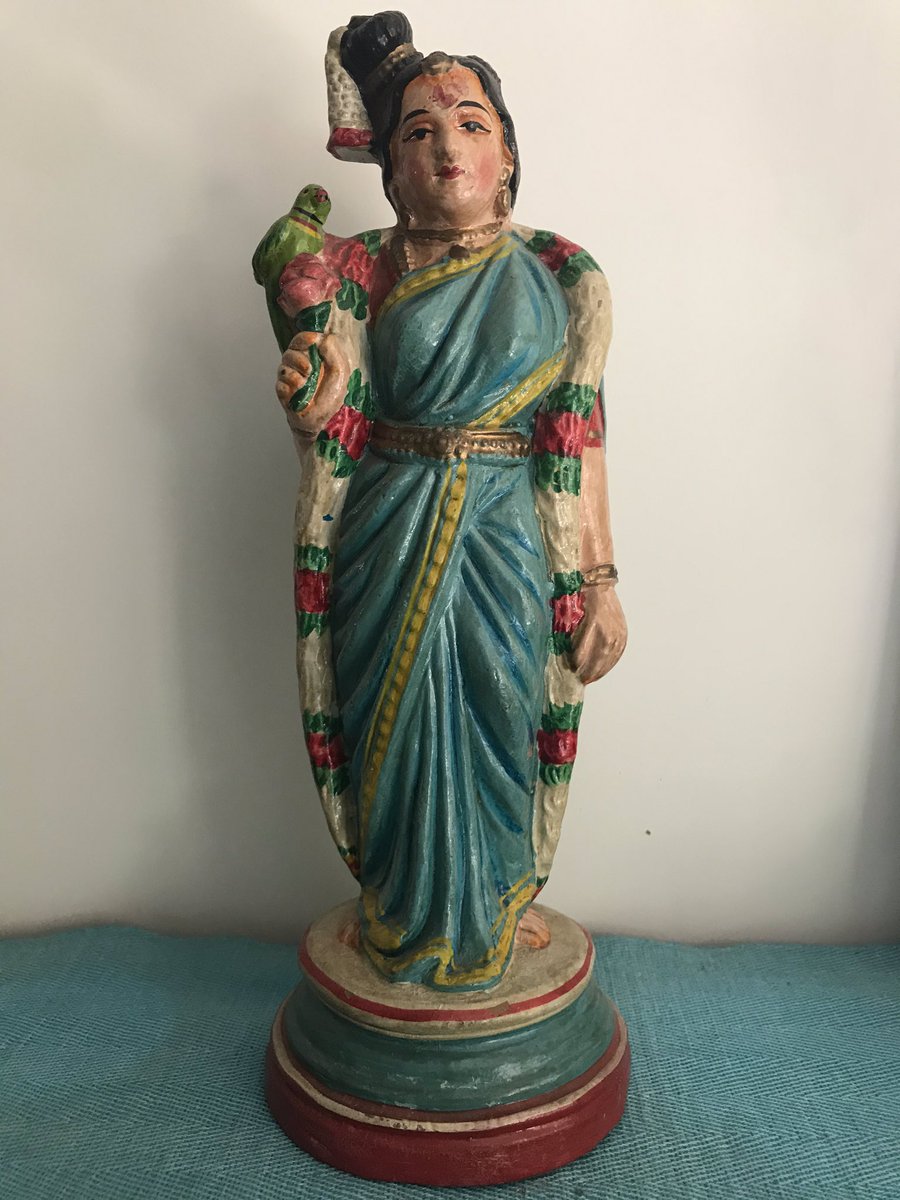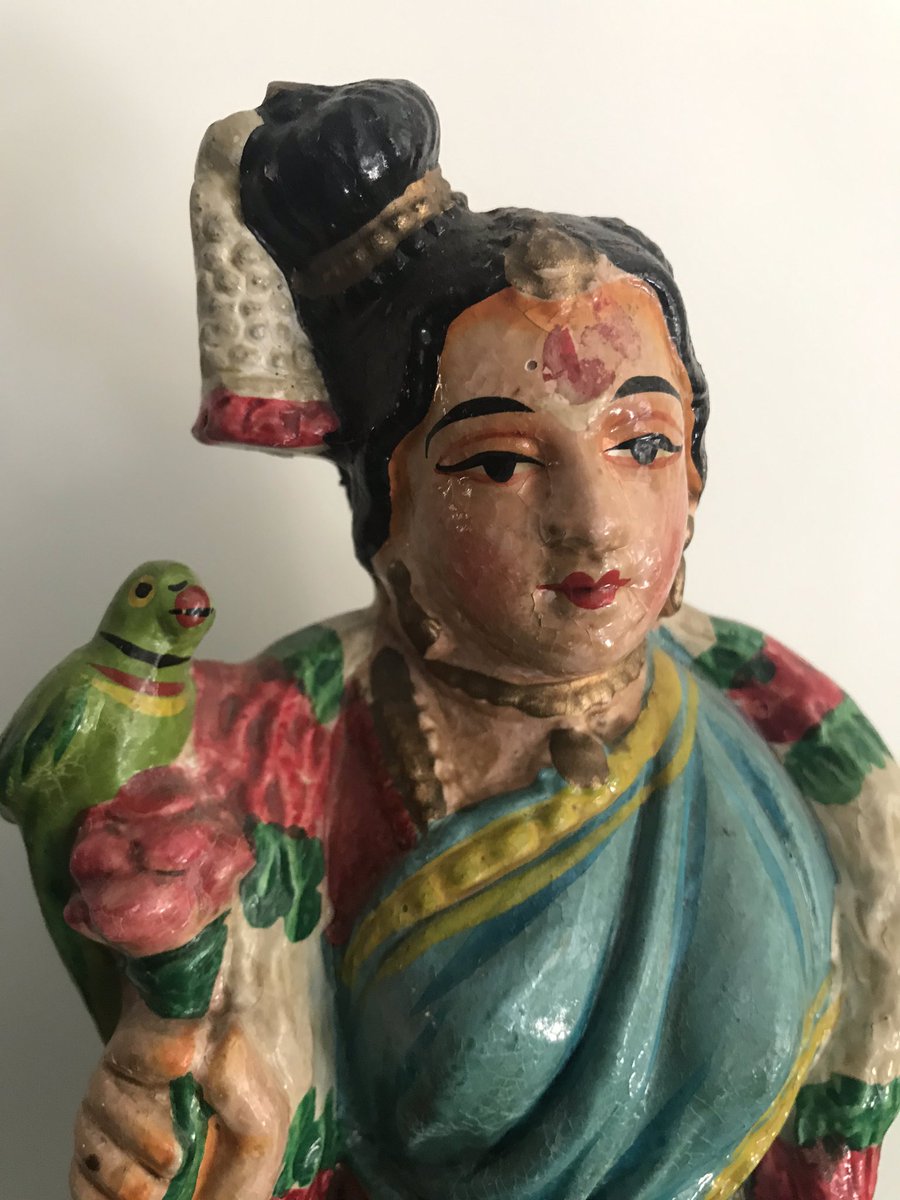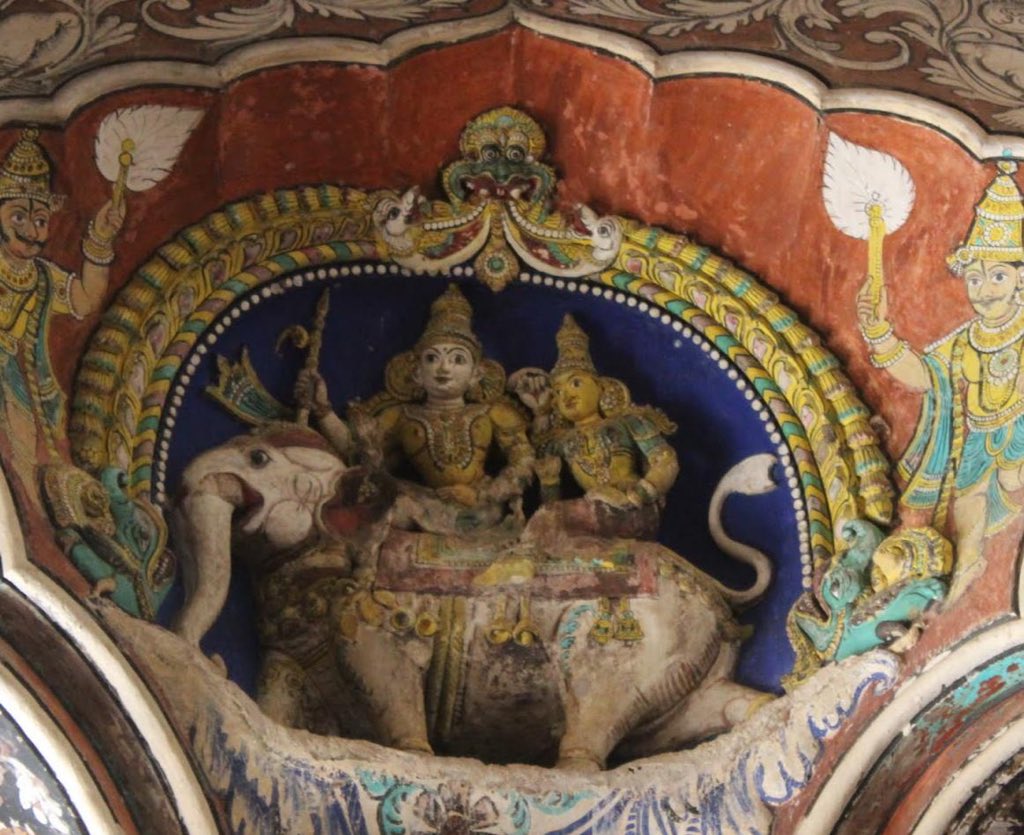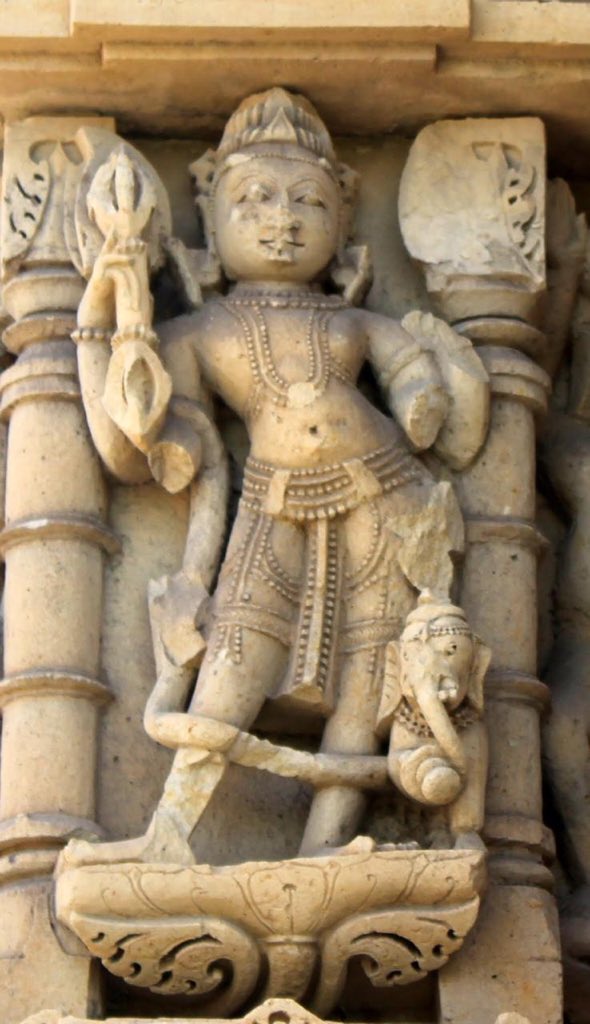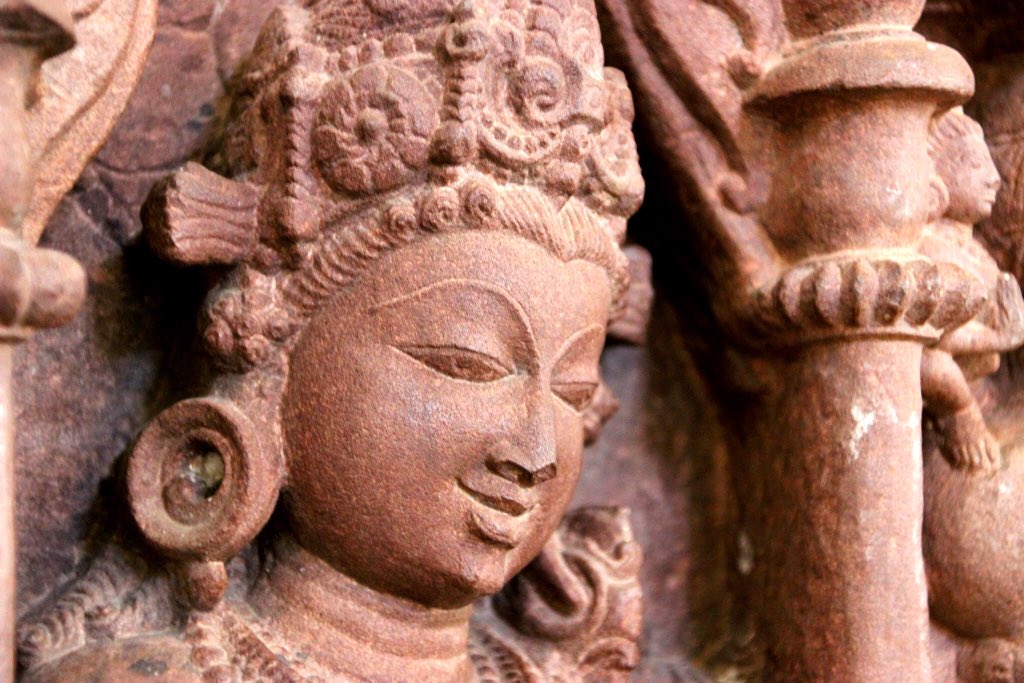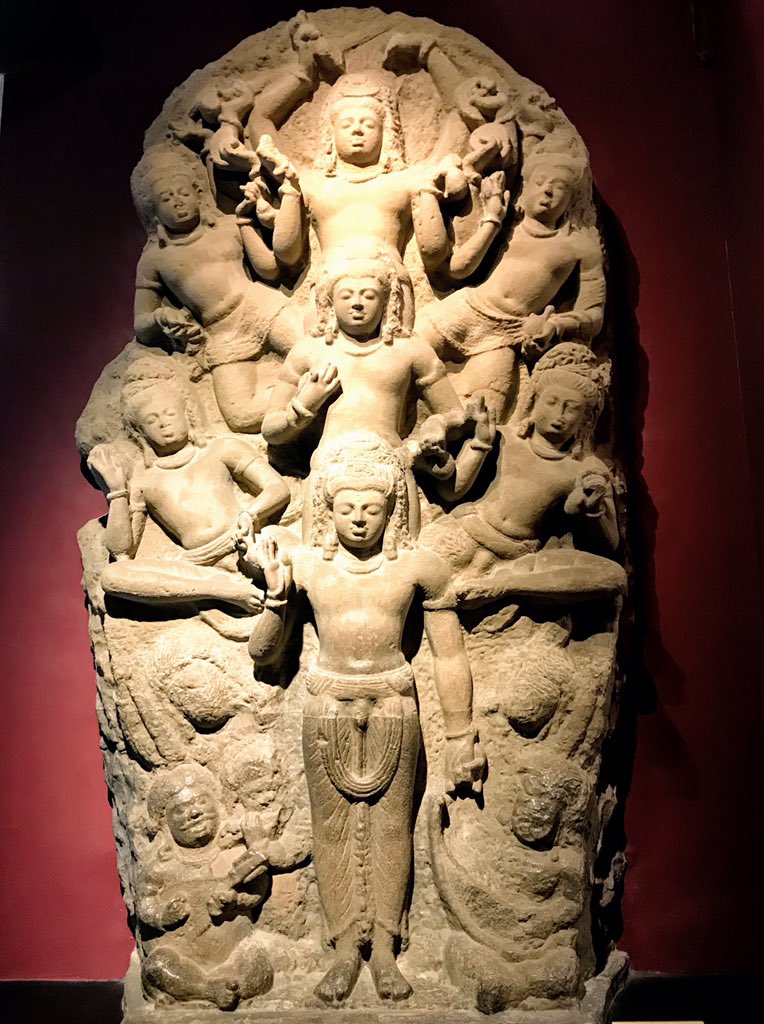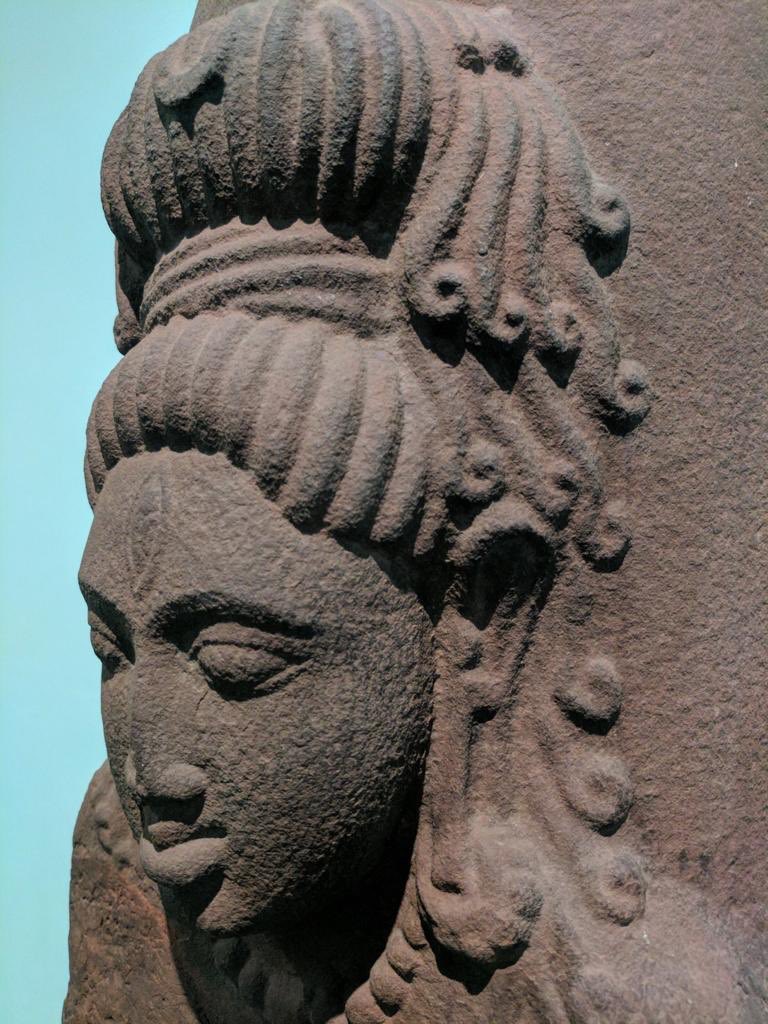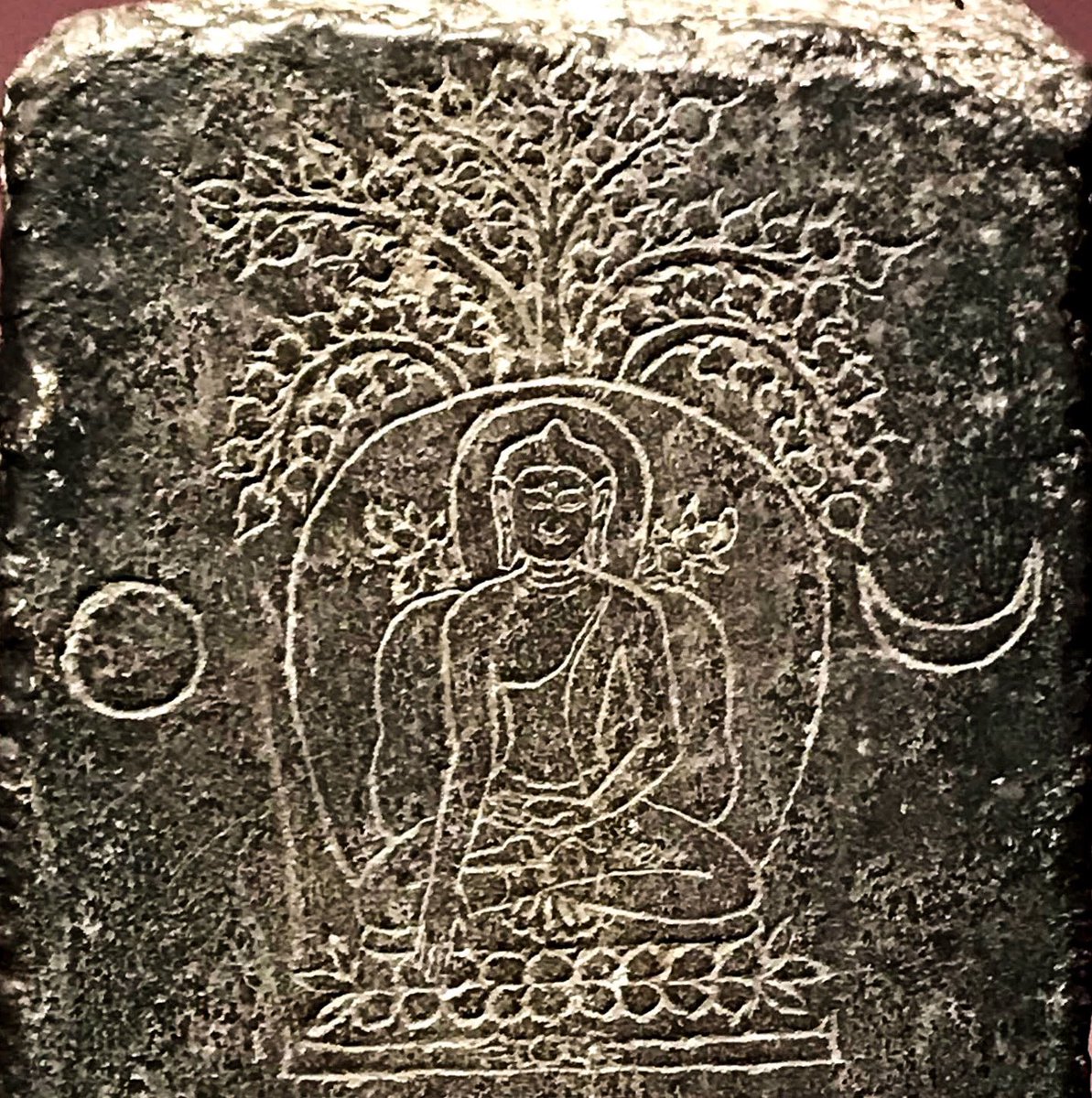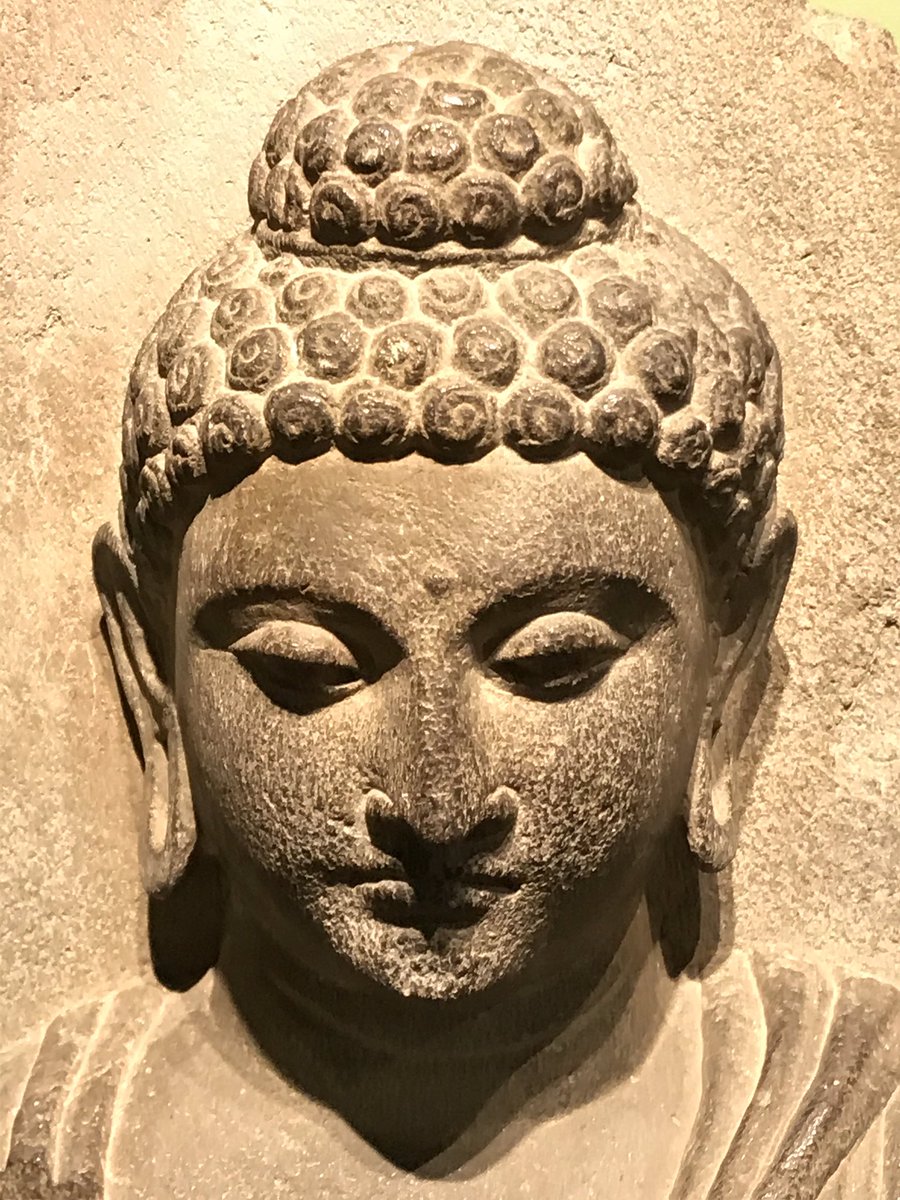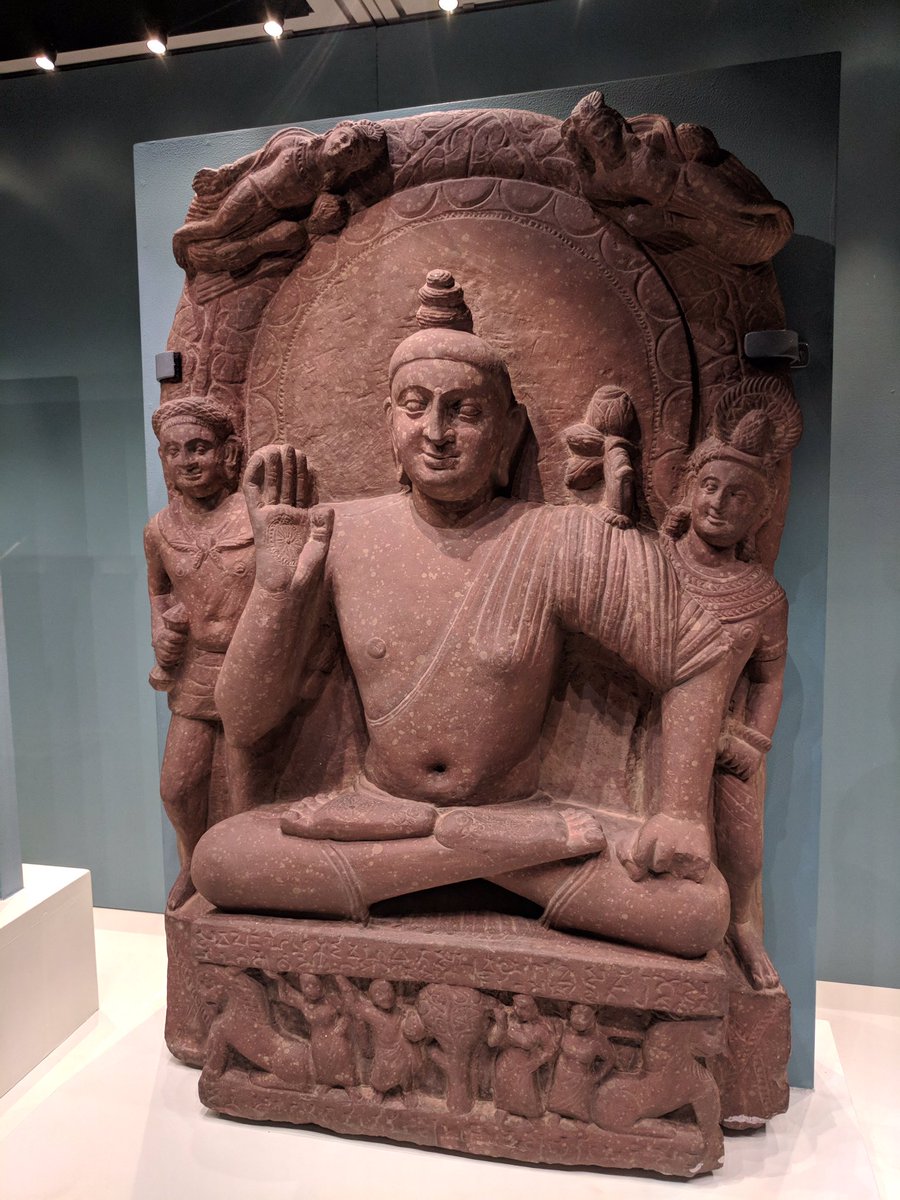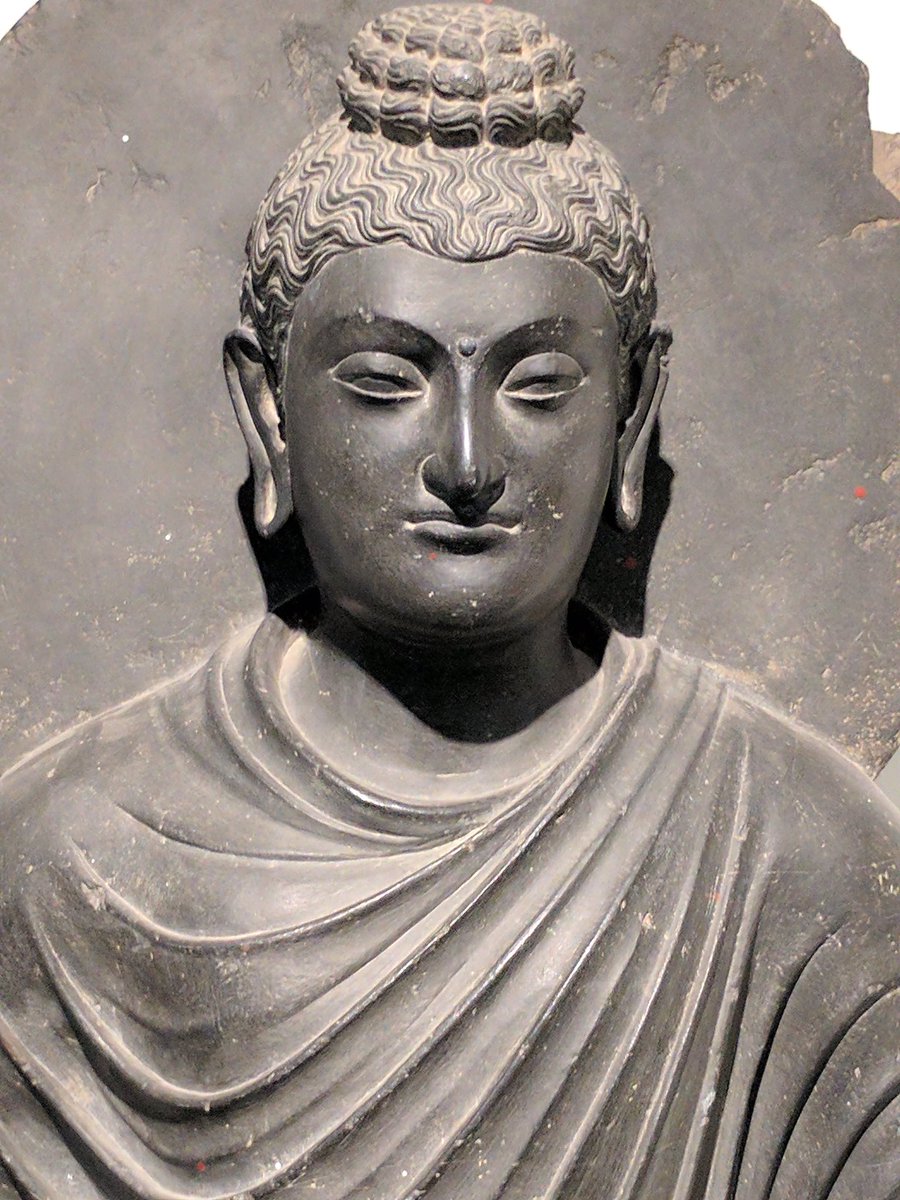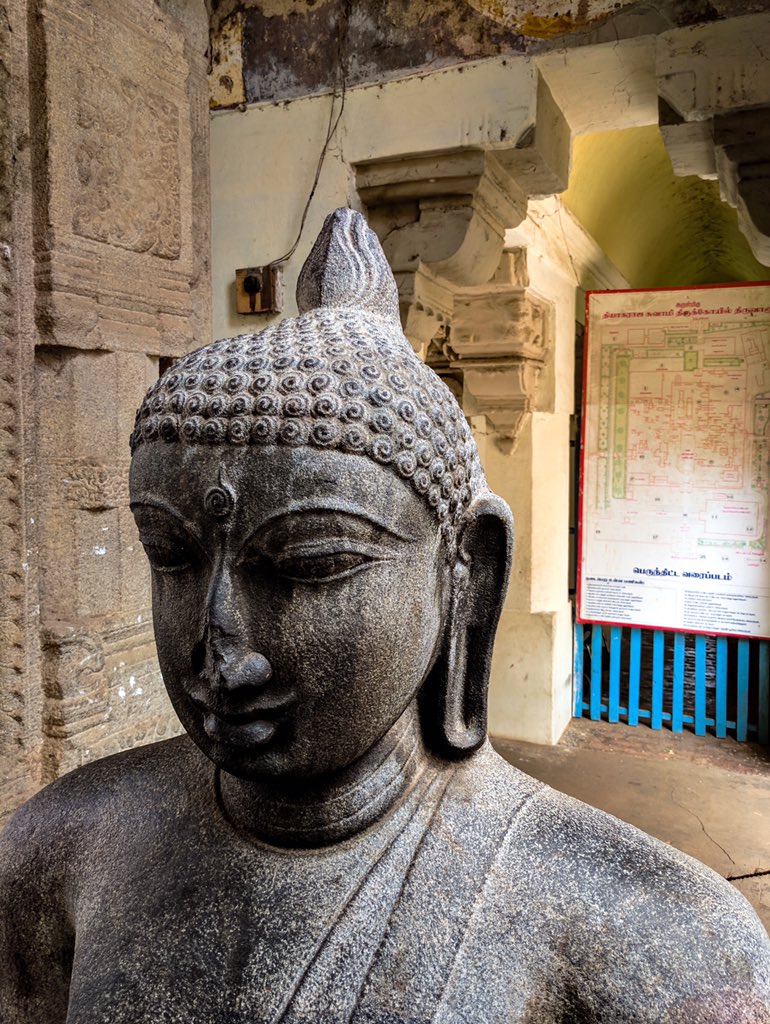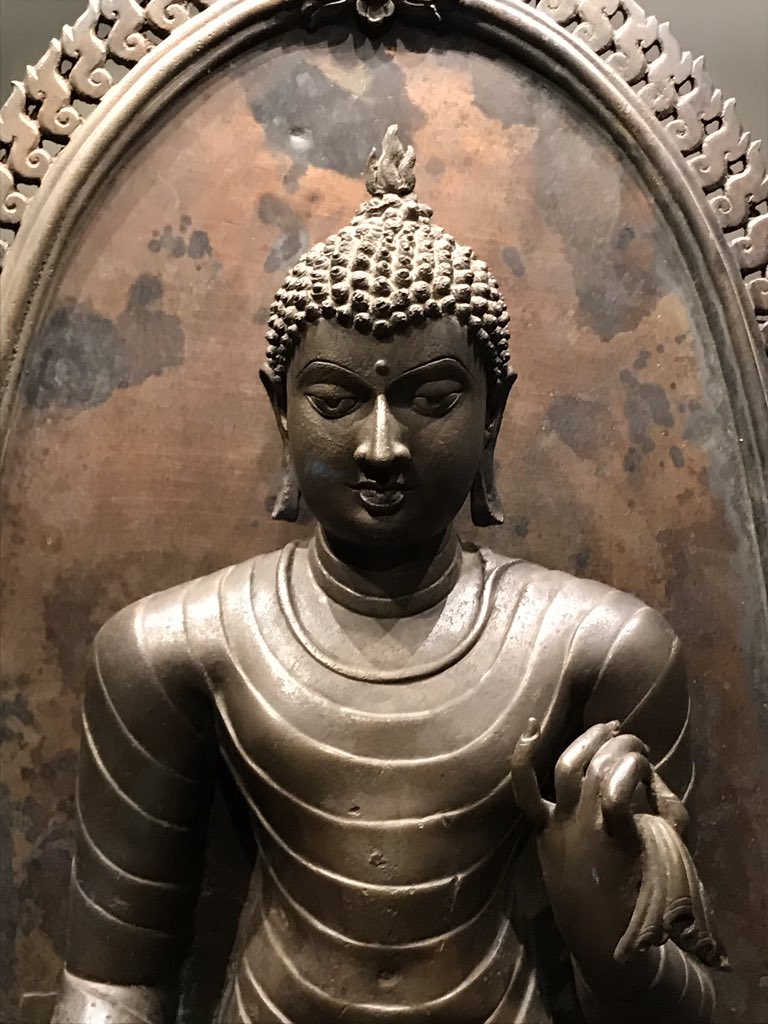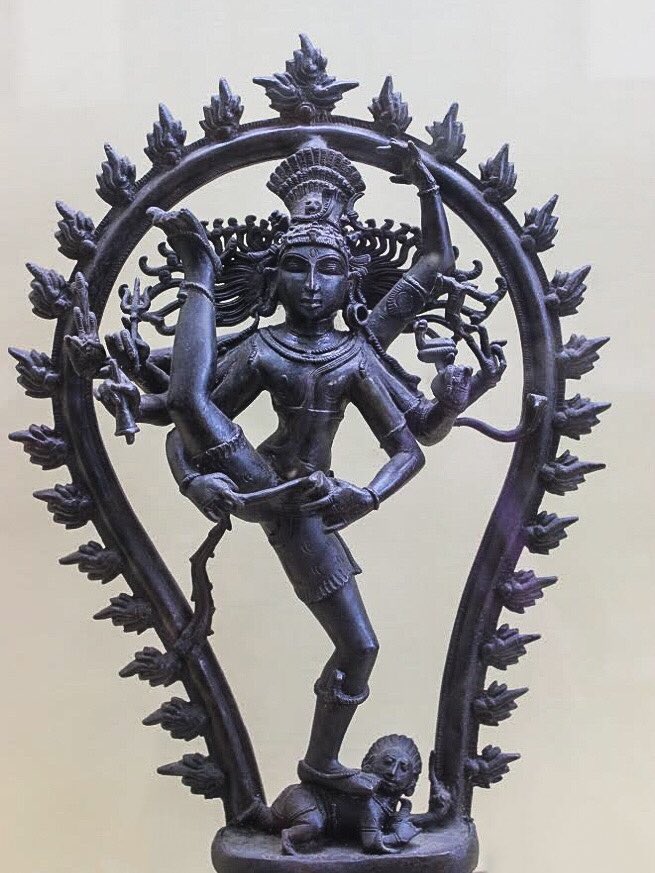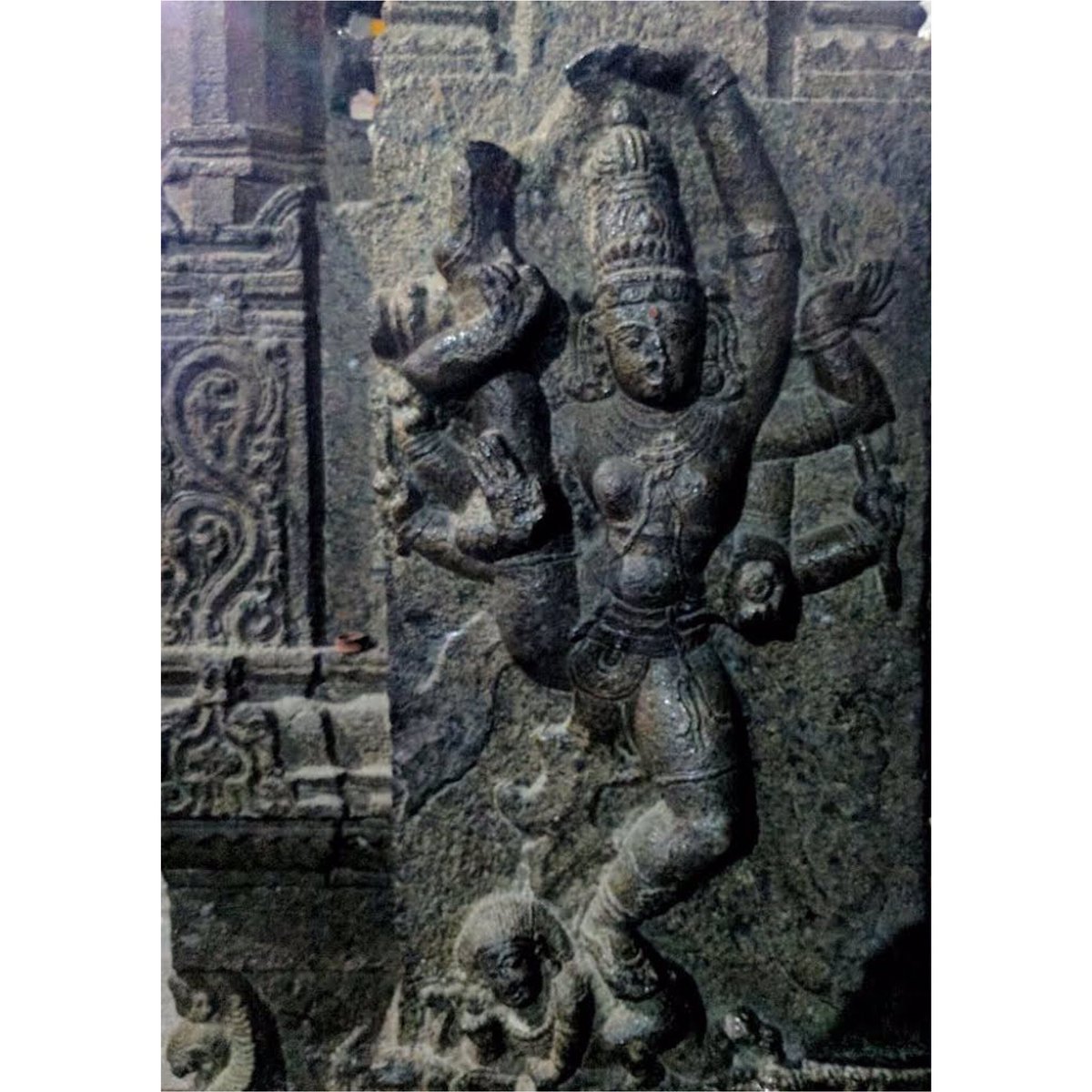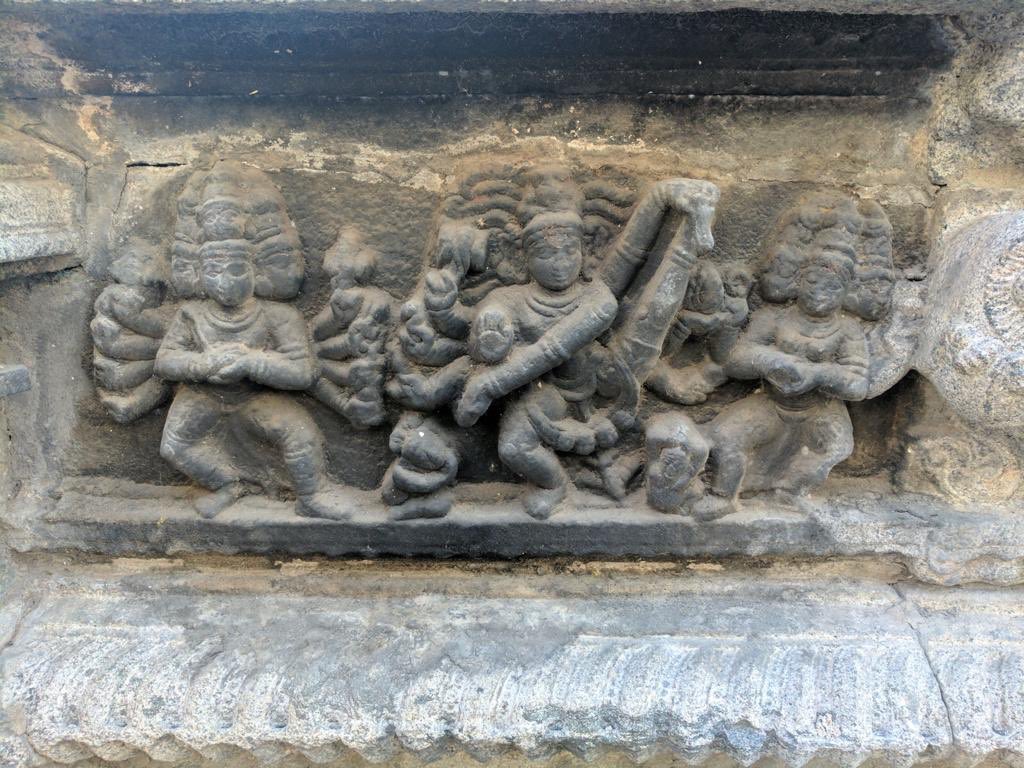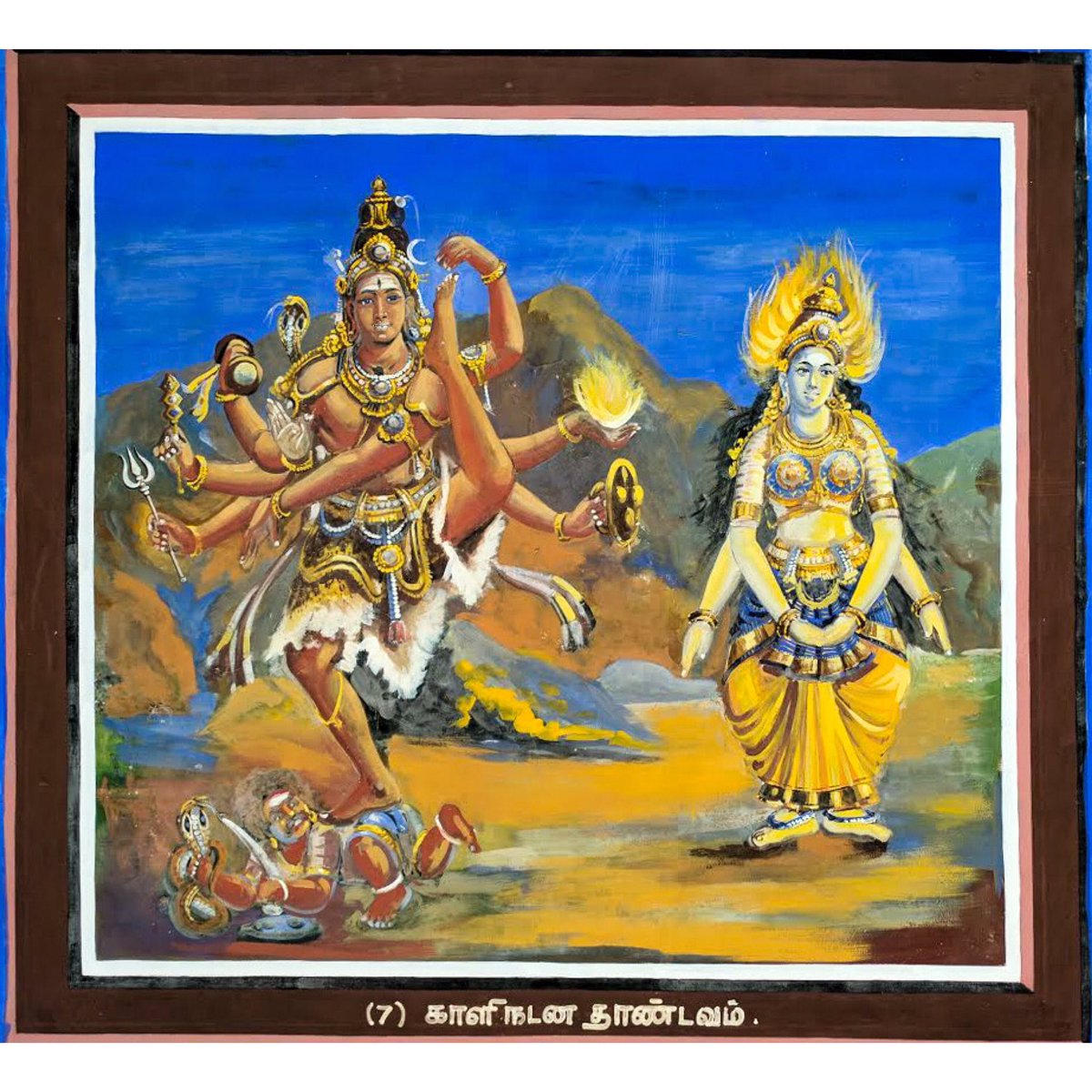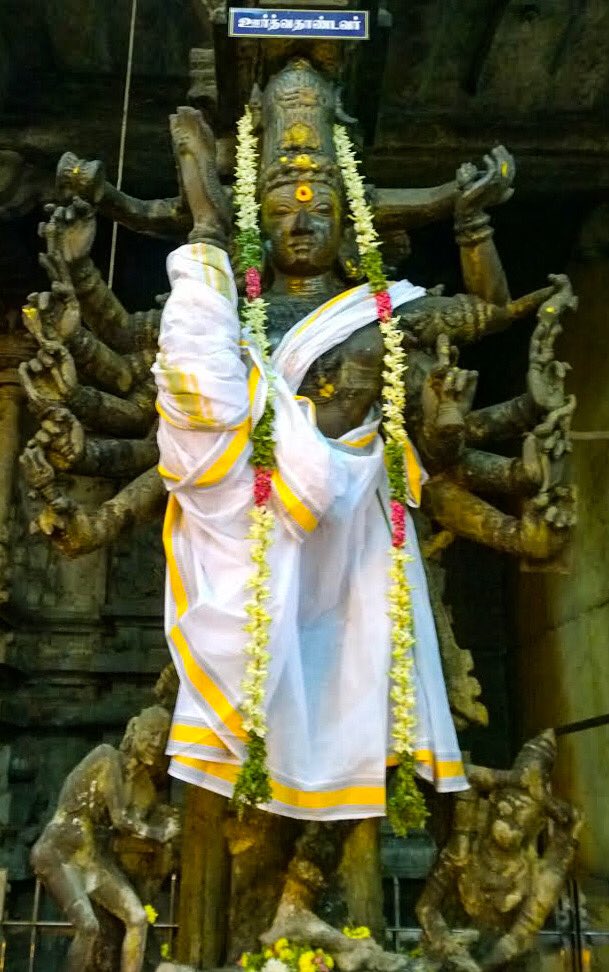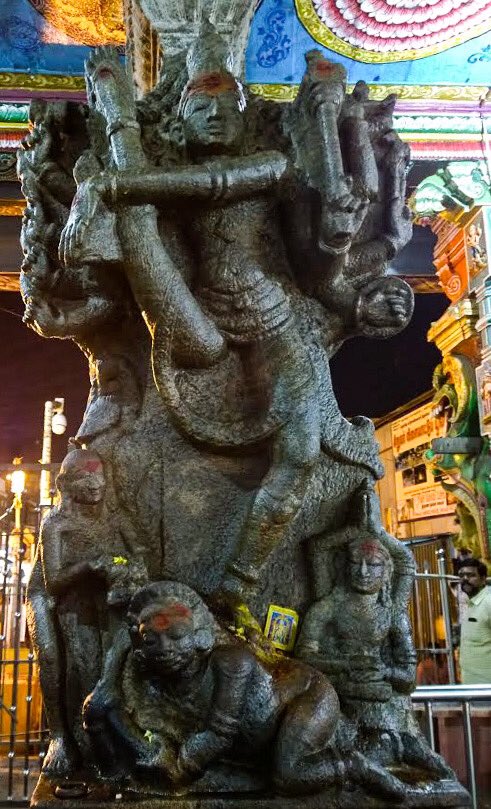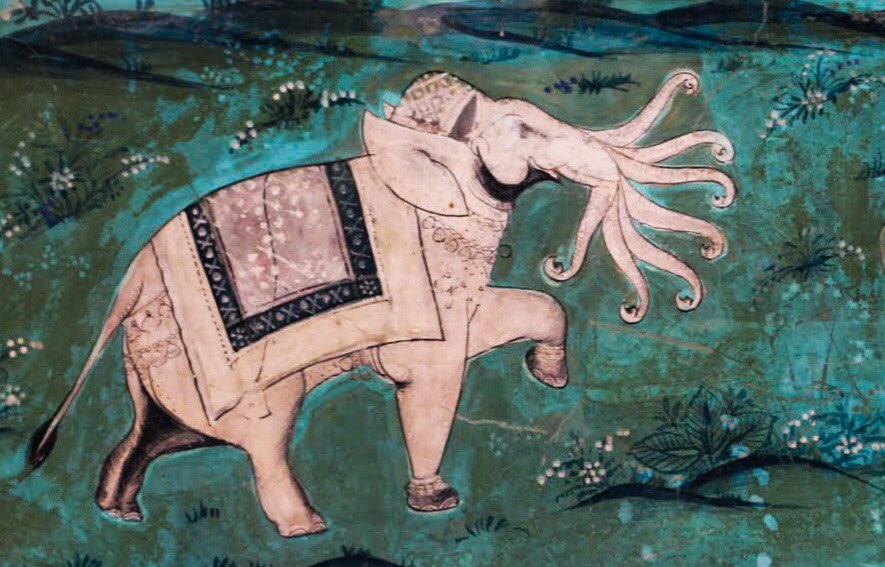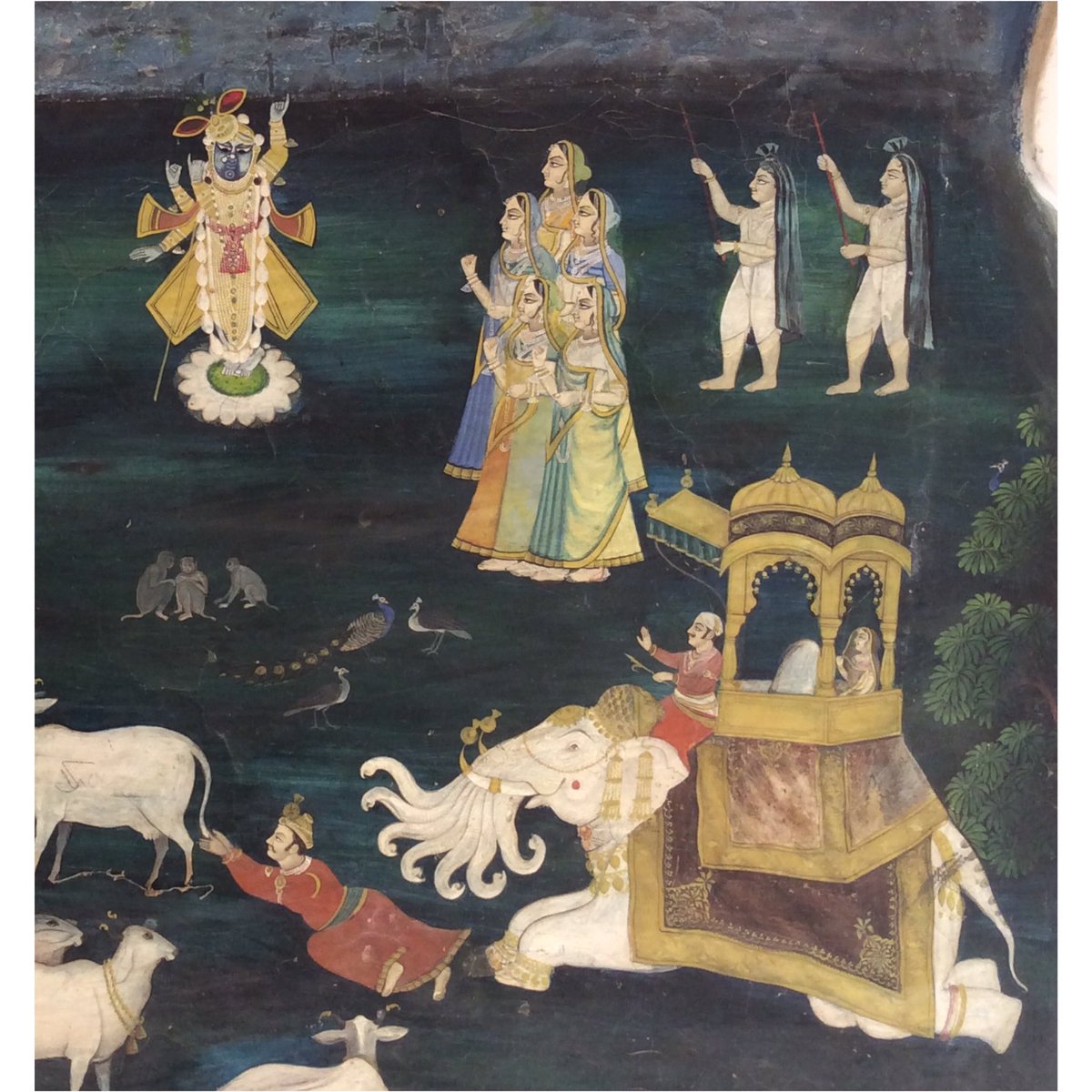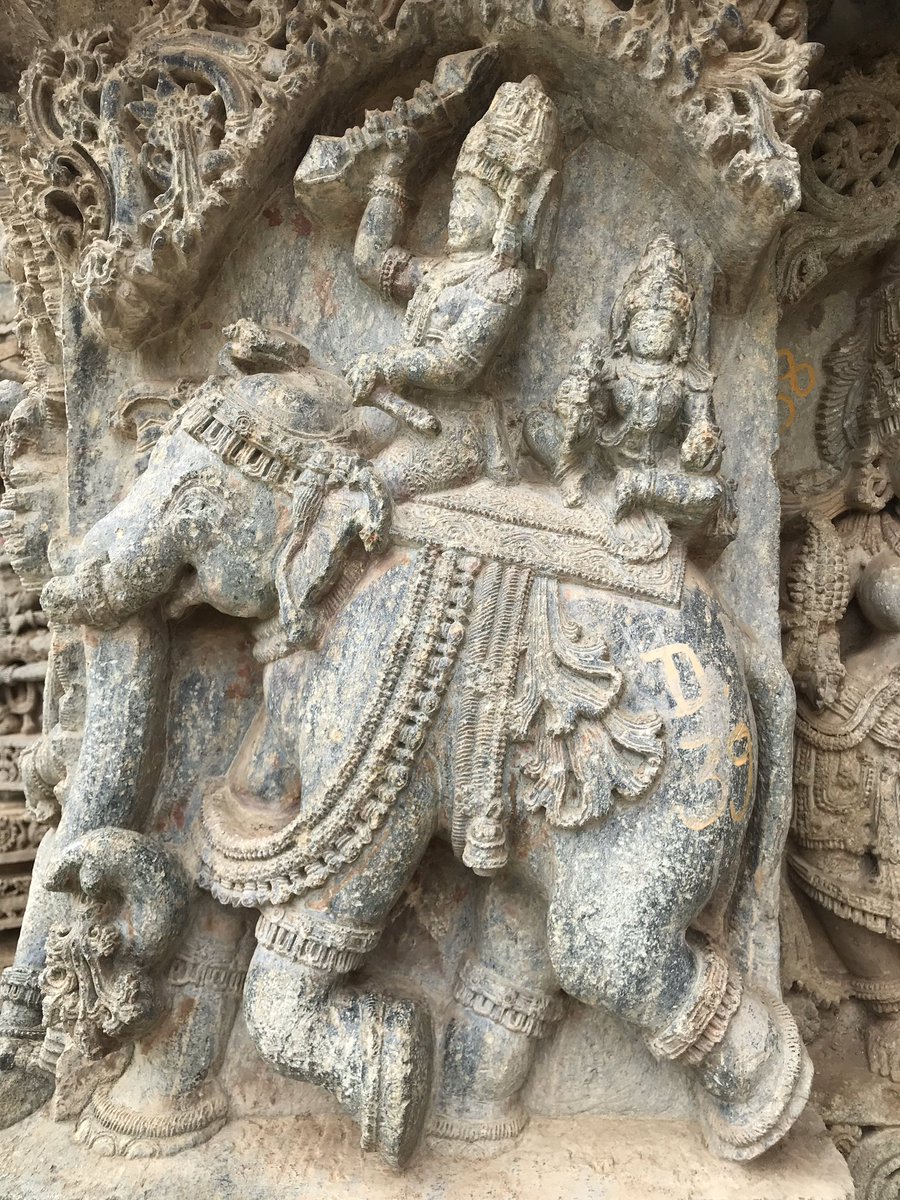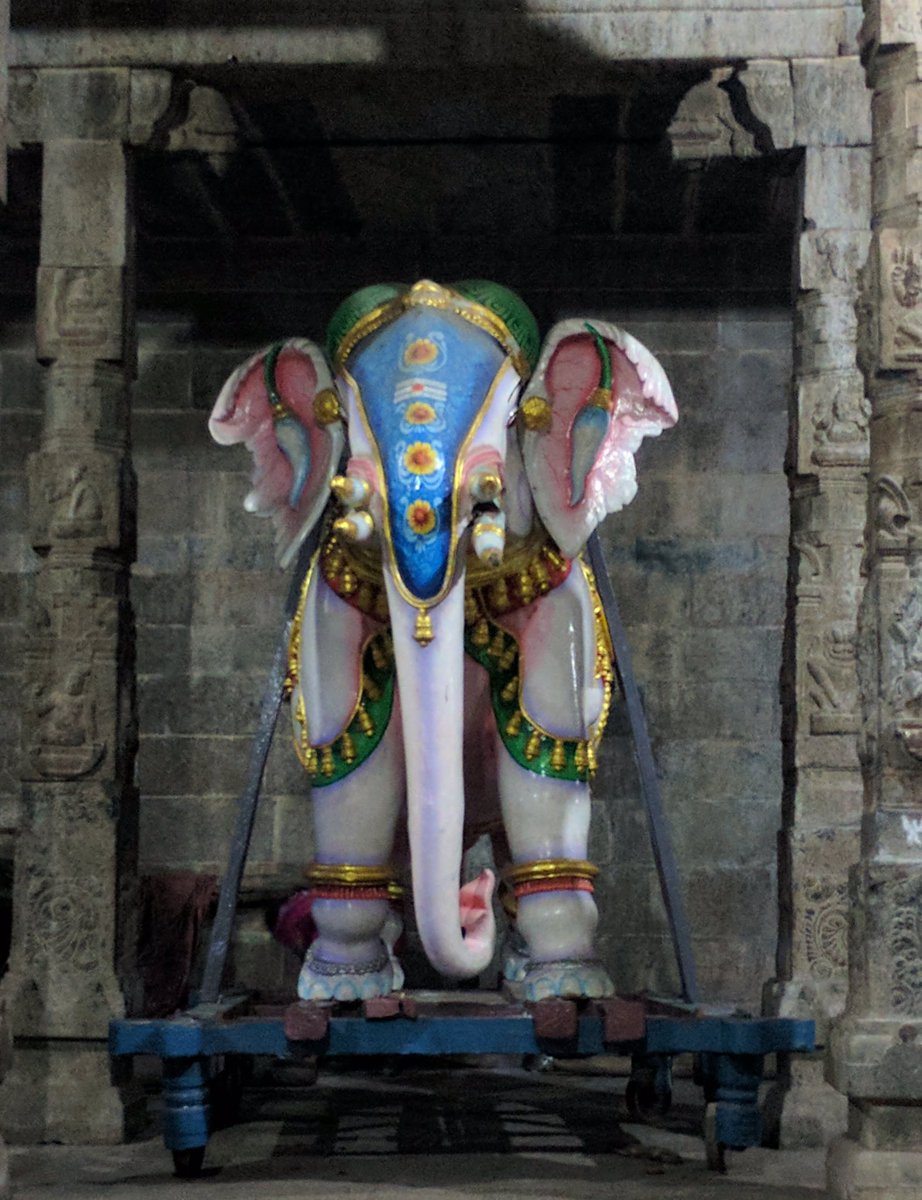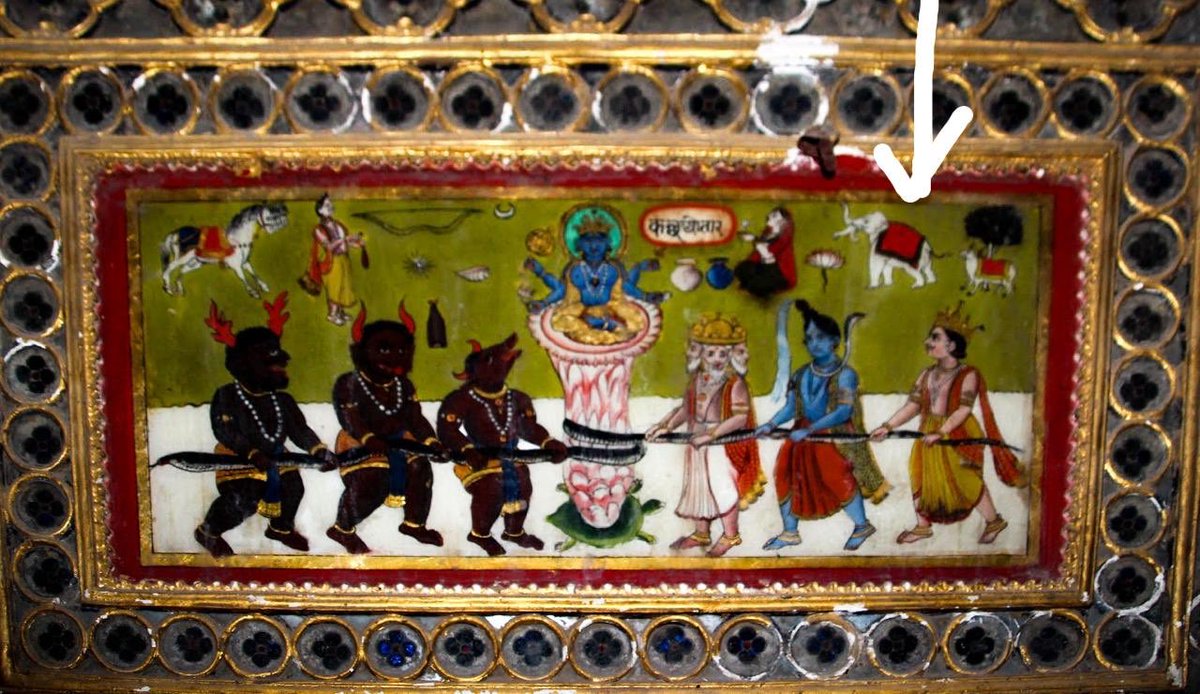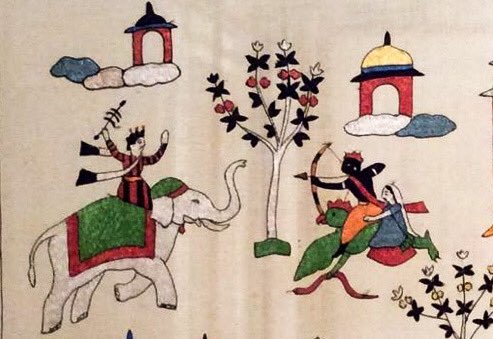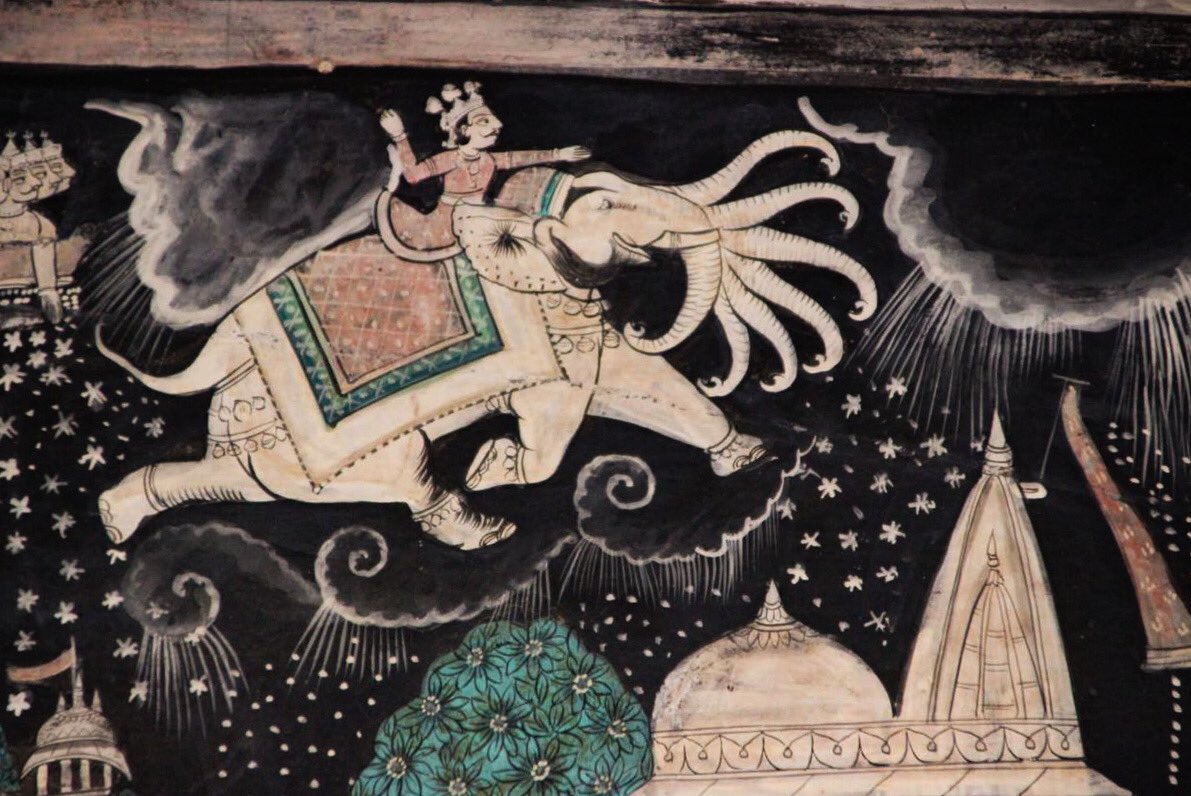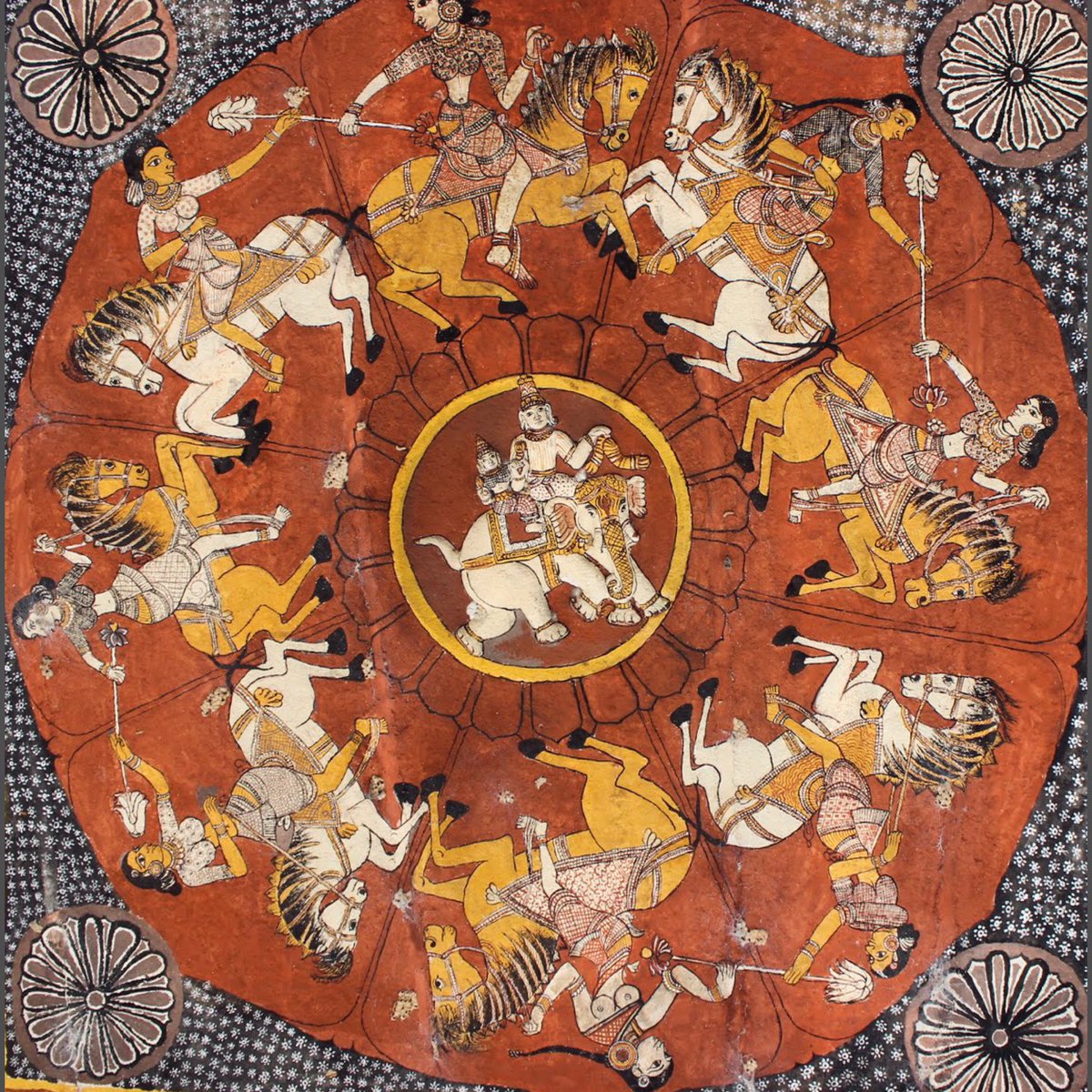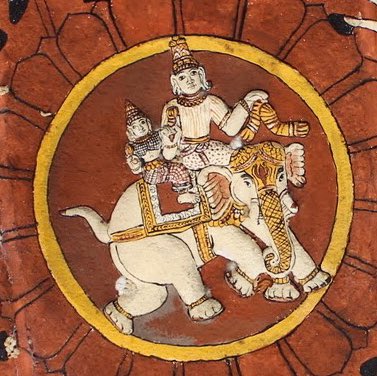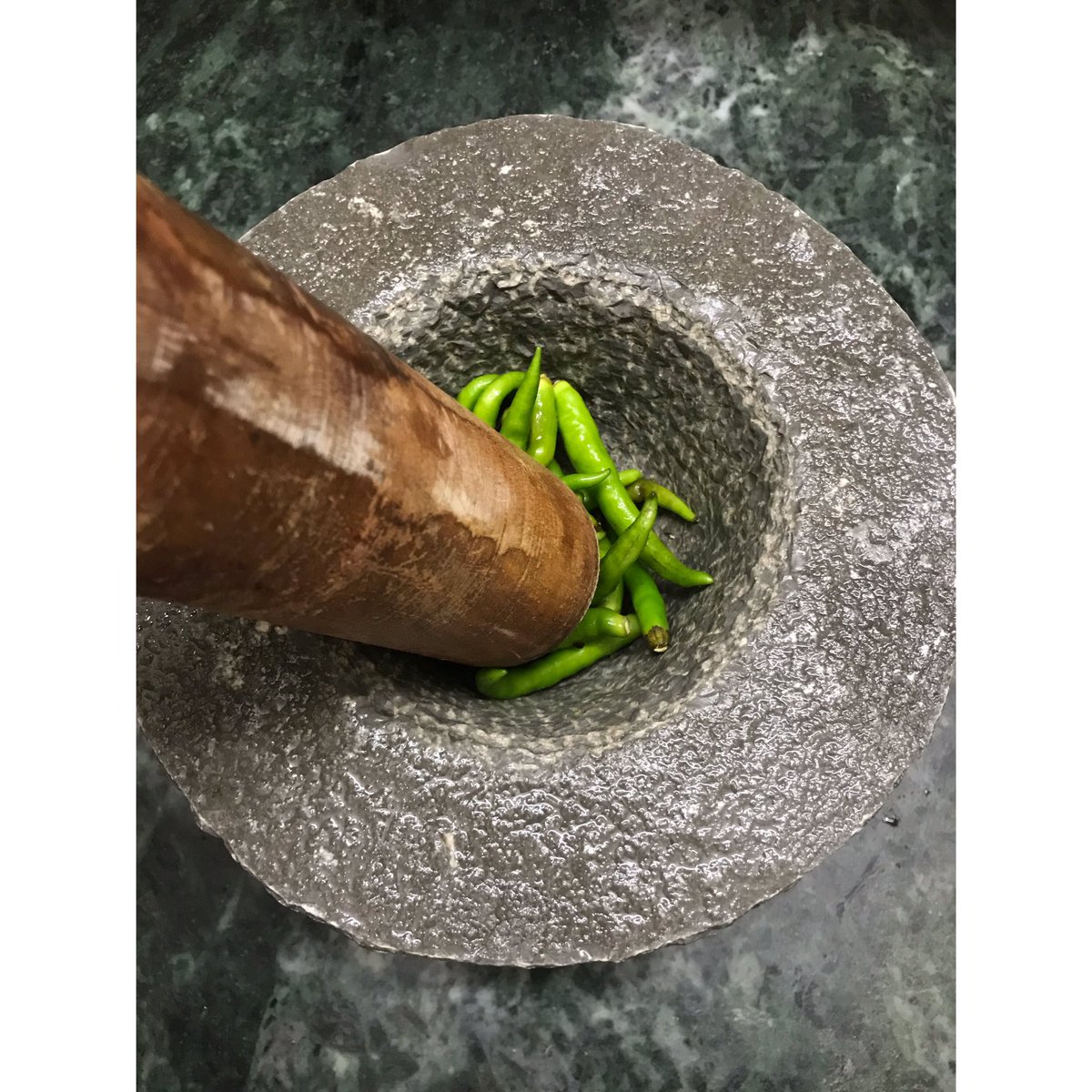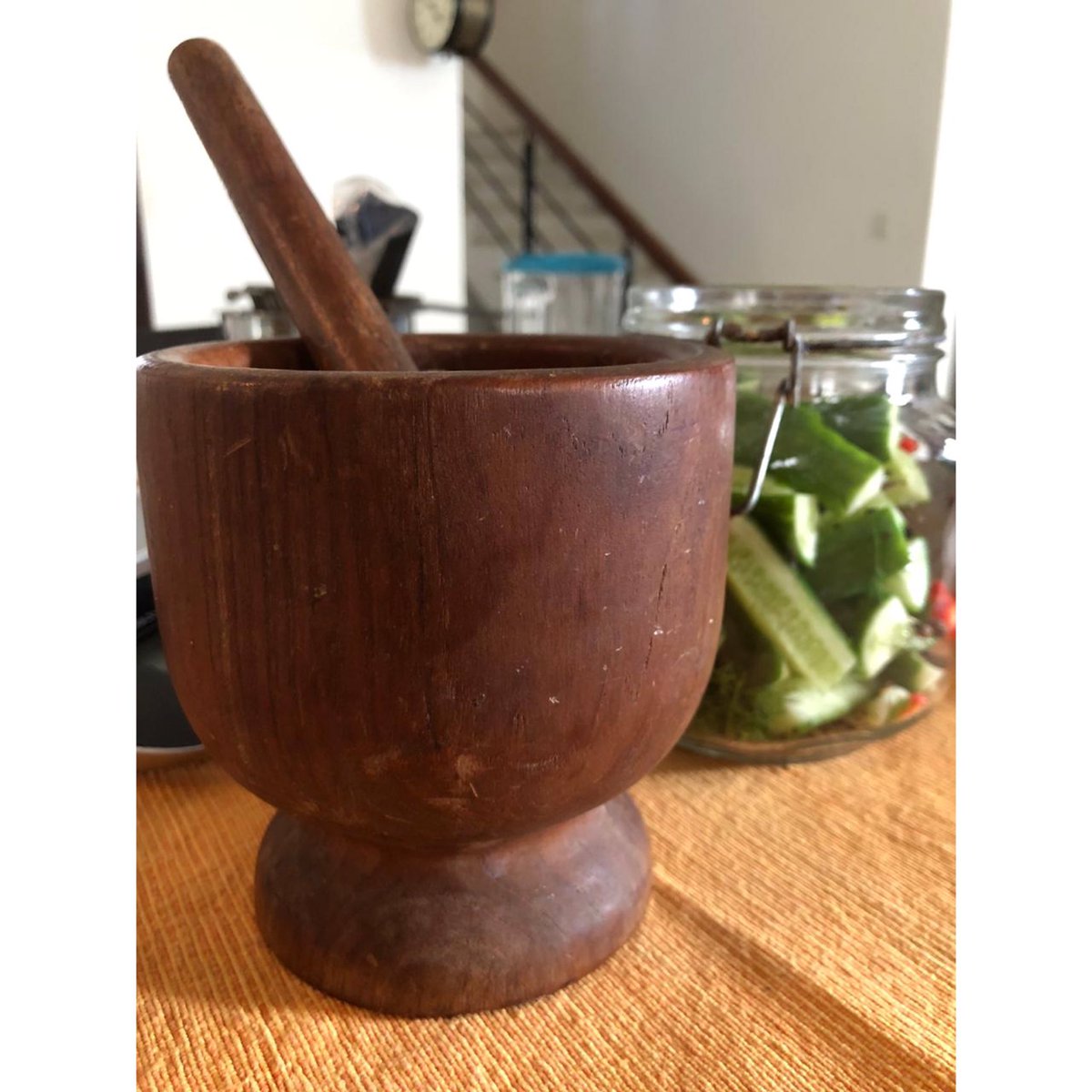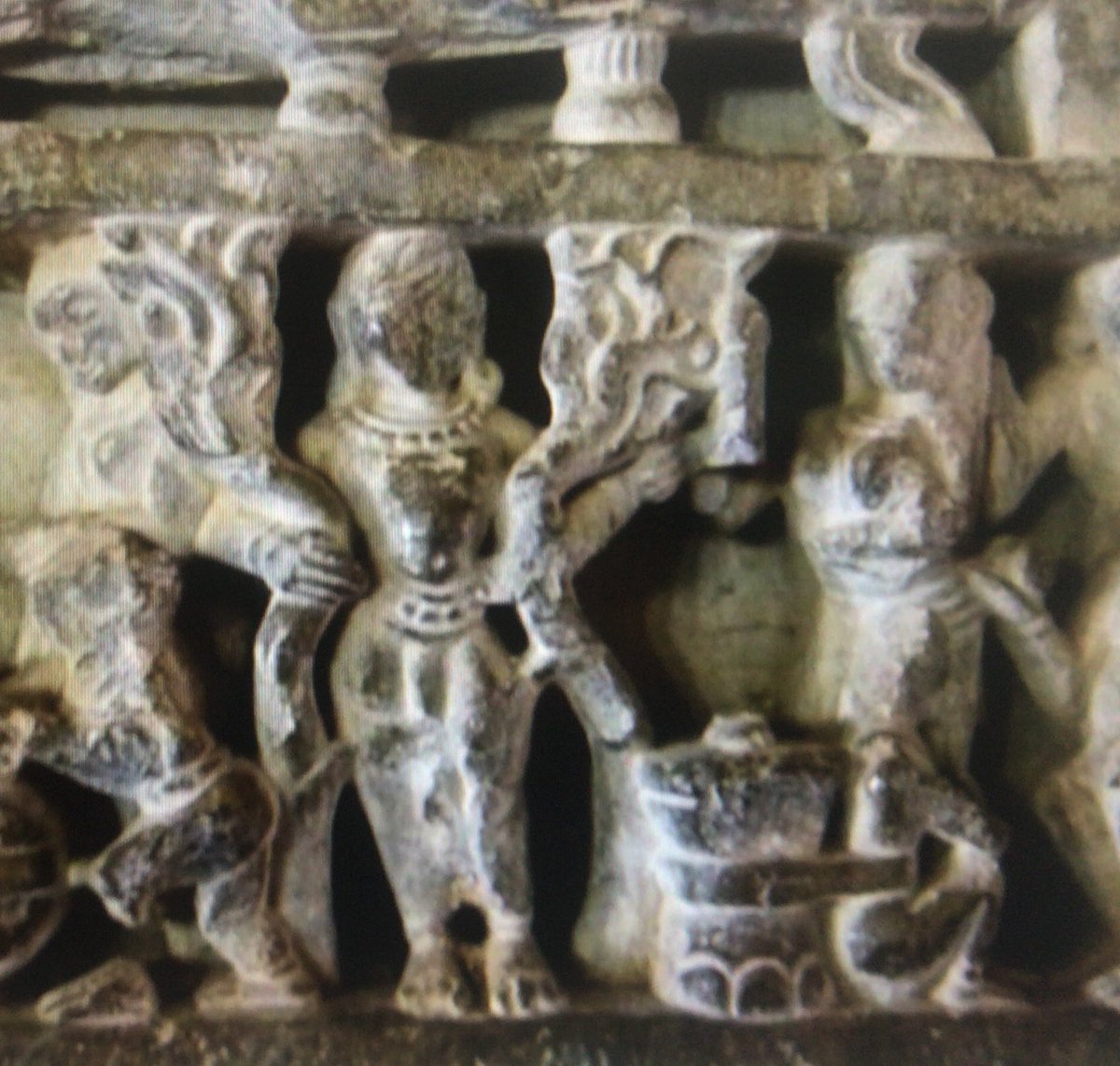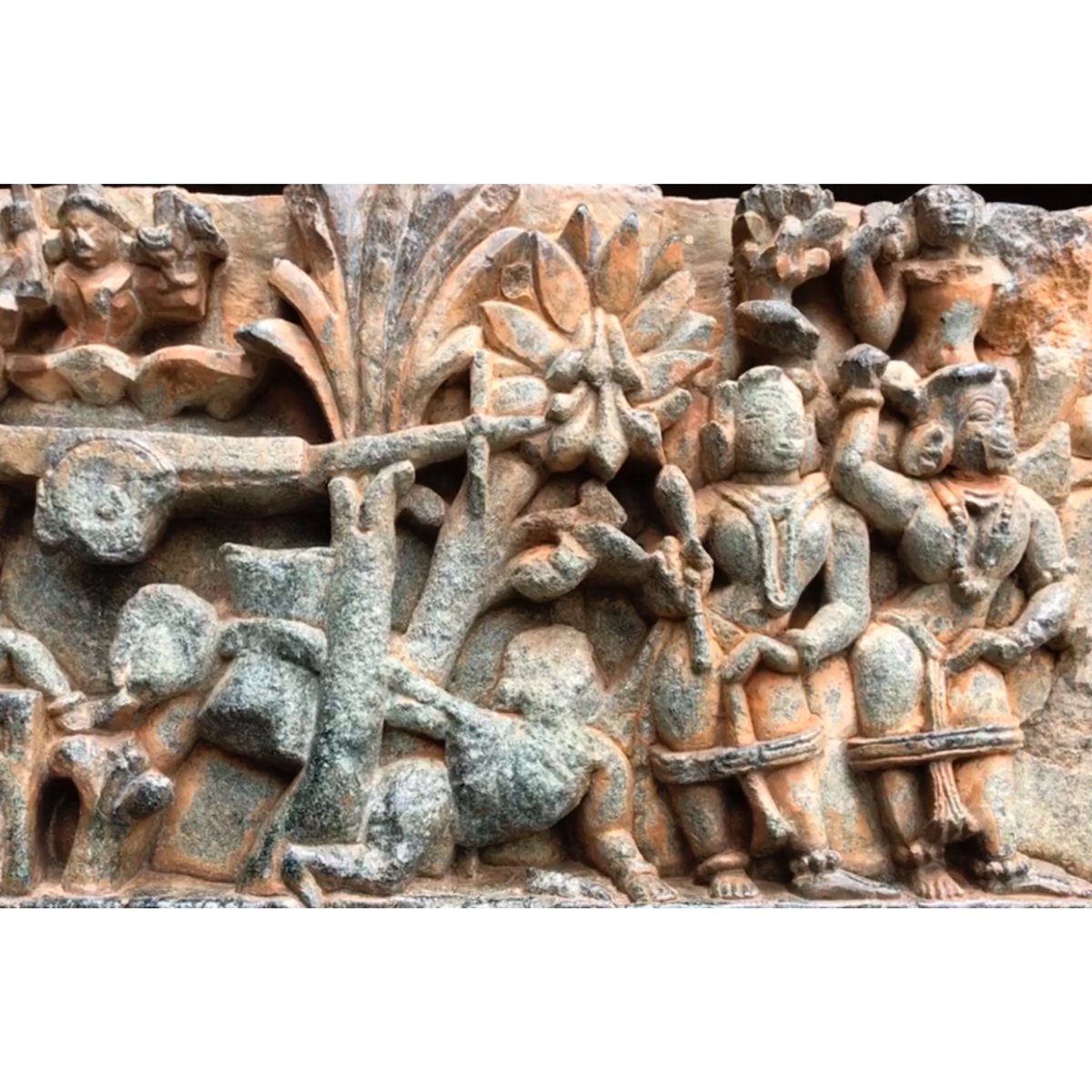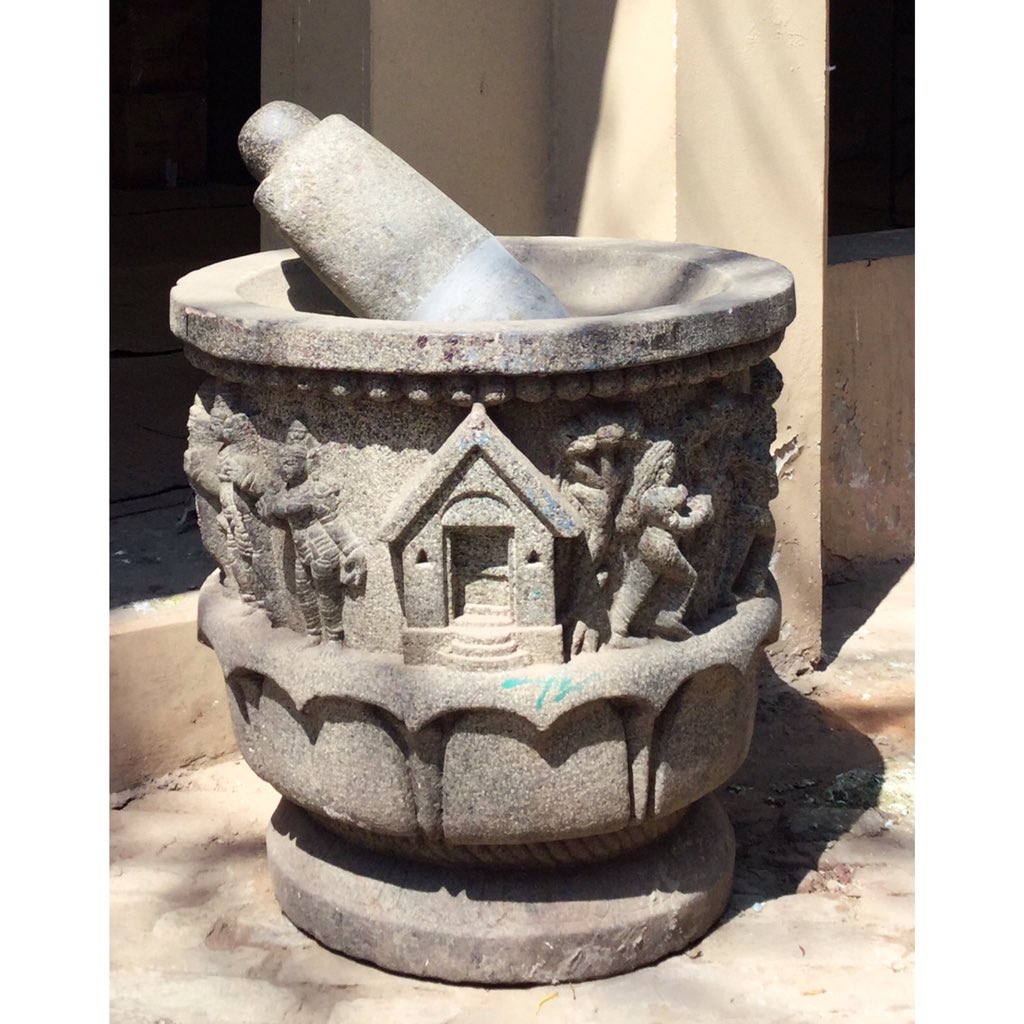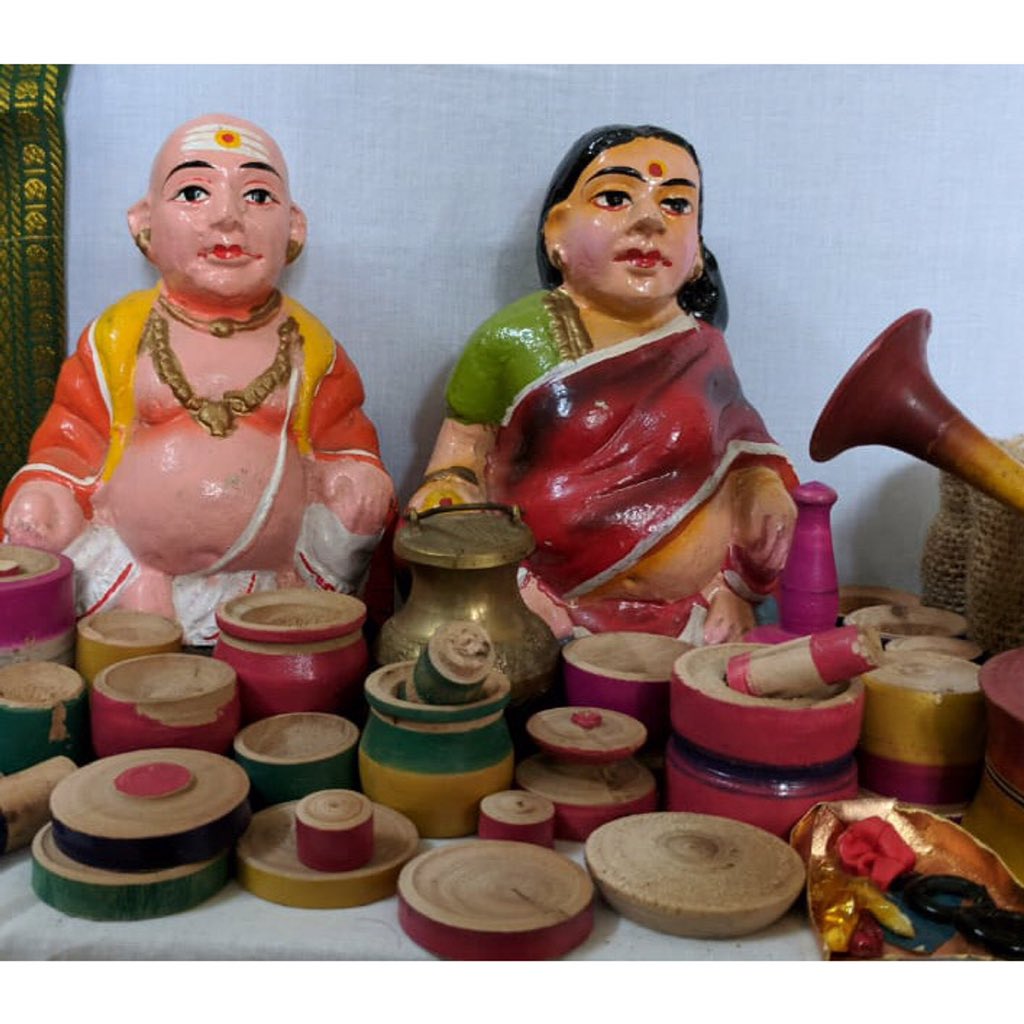Super excited to share an art-based series starting next week called #ArtByTheLetter or #AksharArt in collaboration with @anushankarn. As the hashtag & poster suggest, this will be a series on #IndianArt using the Hindi varnmala or the Devanagari script. (1/5)
(2/5) For eg., अ is for Ardhanarishwara, ब is for Balarama, and so on. This is how #ArtByTheLetter is going to work:
This is an ongoing series and we will be posting about two letters per week.
This is an ongoing series and we will be posting about two letters per week.
(3/5)
Both of @anushankarn and I will have our own take on what we we share for every #ArtByTheLetter. I’ll be focussing on the lesser known aspects of Indian Art from Hindu, Jain & Buddhist traditions.
Both of @anushankarn and I will have our own take on what we we share for every #ArtByTheLetter. I’ll be focussing on the lesser known aspects of Indian Art from Hindu, Jain & Buddhist traditions.
(4/5)
Whatever I will be sharing as #IndianArt for the #ArtByTheLetter or #AksharArt series will be from monuments, museums and occasionally from my own art collection.
Whatever I will be sharing as #IndianArt for the #ArtByTheLetter or #AksharArt series will be from monuments, museums and occasionally from my own art collection.
(5/5)
While we may have initiated this series, it is by no means exclusive. I really hope that you will join in and share your own #ArtByTheLetter. Do use the hashtag when you post and feel free to tag me. #AksharArt
While we may have initiated this series, it is by no means exclusive. I really hope that you will join in and share your own #ArtByTheLetter. Do use the hashtag when you post and feel free to tag me. #AksharArt
अ is for अग्नि or #Agni, Vedic god of fire and one of the most important in the Vedic pantheon. #AksharArt #ArtByTheLetter
1. 7th Cen. CE, Kaimur (BiharMuseum)
2. Agni’s head as https://abs.twimg.com/emoji/v2/... draggable="false" alt="🔥" title="Feuer" aria-label="Emoji: Feuer"> at wedding of Shiva & Parvati, 6th cen. CE, Jogeshwari Caves, Mumbai.
https://abs.twimg.com/emoji/v2/... draggable="false" alt="🔥" title="Feuer" aria-label="Emoji: Feuer"> at wedding of Shiva & Parvati, 6th cen. CE, Jogeshwari Caves, Mumbai.
3. 11th cen. CE, Thanjavur
1. 7th Cen. CE, Kaimur (BiharMuseum)
2. Agni’s head as
3. 11th cen. CE, Thanjavur
अ is for #Agni with varied iconography: 1, 2 or 3 heads; with beard or clean shaven; 2 or 3 legs, & 2, 4 or 7 arms; without or with 1 or both his consorts - Svaha & Svadha. #AksharArt #ArtByTheLetter
1. With consorts Svaha & Svadha, 10th Cen. CE.
2. Agni & Svaha, 16th century CE
1. With consorts Svaha & Svadha, 10th Cen. CE.
2. Agni & Svaha, 16th century CE
आ is for आंडाल or Andal, a Bhakti poet-saint from Tamil Nadu. She is known for two remarkable works - Tiruppavai & Nacchiyar Tirumoli .
Photo: Thanjavur painting, early 19th century, Piramal Museum).
#AksharArt #ArtByTheLetter
Photo: Thanjavur painting, early 19th century, Piramal Museum).
#AksharArt #ArtByTheLetter
Andal is the only woman among the 12 Alvars of the Tamil Srivaishnava tradition. I was introduced to Andal and her Tiruppavai by my Amma, a musician, when I was less than 3 years old.
Photo: Golu bommai from my collection, c.1942.
#AksharArt #ArtByTheLetter
Photo: Golu bommai from my collection, c.1942.
#AksharArt #ArtByTheLetter
इ is for इंद्रा / Indra #AksharArt #ArtByTheLetter
Over millennia in the Hindu narrative, Indra became associated with thunder, rainmaking, fertility, etc
1. Wall painting, Bundi palace, c.1880
2. Detail from panel at Mandapeshwar Caves, Mumbai, 8th cent. CE
3. Thanjavur Palace
Over millennia in the Hindu narrative, Indra became associated with thunder, rainmaking, fertility, etc
1. Wall painting, Bundi palace, c.1880
2. Detail from panel at Mandapeshwar Caves, Mumbai, 8th cent. CE
3. Thanjavur Palace
इ is for इंद्रा / Indra #AksharArt #ArtByTheLetter
Dikpala Indra at Kiradu and Bijolia temples, 11th cent. CE
Indra at Stepwell, Bundi
Dikpala Indra at Kiradu and Bijolia temples, 11th cent. CE
Indra at Stepwell, Bundi
इ is for इंद्रा / Indra #AksharArt #ArtByTheLetter
Indra features in Hindu, Buddhist & Jain narratives with shared and reinterpreted traits.
Indra is a Vedic deity, the primary recipient of the Vedic sacrifice and perhaps the most important in the Vedic pantheon.
Indra features in Hindu, Buddhist & Jain narratives with shared and reinterpreted traits.
Indra is a Vedic deity, the primary recipient of the Vedic sacrifice and perhaps the most important in the Vedic pantheon.
ई is for ईश्वर or Ishvara, a word that has lived many meanings through time, philosophies and contexts. It has variously meant God, Supreme Being, Supreme Soul, personal god, king, and Lord Shiva, among others.
#AksharArt #ArtByTheLetter
#AksharArt #ArtByTheLetter
Today, Ishvara has become more or less synonymous with Shiva. Pasupata Saivism, the earliest and oldest known Shaivite sect considers Shiva as the Supreme Lord and the 8th century CE Parashiva in the photo, can be interpreted as representing that.
#AksharArt #ArtByTheLetter
#AksharArt #ArtByTheLetter
To a lesser extent, Ishvara has also become the generic name to refer to a personal god. The photos show detail from an Ekamukhalingam, 5th century CE, MP. Here the single face of Shiva embodies all aspects, and is yet very personal and intimate. #AksharArt #ArtByTheLetter
Temples dedicated to Shiva often have the suffix Ishvara, particularly in South India. For eg.Brihadeeshwara (Photo), Hoysaleeshwara, Kapaleeshwara, Kedareshwara, etc. The temple in its entirety is also considered to be Ishvara.
#AksharArt #ArtByTheLetter
#AksharArt #ArtByTheLetter
उ is for उष्णीष or Ushnisha, one of the 32 marks of the Buddha and is the cranial protuberance on the top of his skull and covered by his hair.
Photo 1: Detail of 12th century engraving of the Buddha showing the ushnisha.
#AksharArt #ArtByTheLetter
Photo 1: Detail of 12th century engraving of the Buddha showing the ushnisha.
#AksharArt #ArtByTheLetter
उ is for उष्णीष or Ushnisha The earliest depictions of the ushnisha in the Buddha’s images is as a an oval, round or elongated top knot.
#AksharArt #ArtByTheLetter
#AksharArt #ArtByTheLetter
उ is for उष्णीष or Ushnisha
It’s not clear if the it was intended to symbolise a crown on Buddha’s head as a Chakravarthin or his spiritual power. The depiction of the ushnisha changed over time from the topknot to a flame or a lotus flower.
#AksharArt #ArtByTheLetter
It’s not clear if the it was intended to symbolise a crown on Buddha’s head as a Chakravarthin or his spiritual power. The depiction of the ushnisha changed over time from the topknot to a flame or a lotus flower.
#AksharArt #ArtByTheLetter
उ is for उष्णीष or Ushnisha
The ushnisha continues to be part of Buddha’s iconography even today as this 2019 wall mural from Patna shows. And yet there are texts which state that the Buddha had a shaved head.
#AksharArtArtByTheLetter
The ushnisha continues to be part of Buddha’s iconography even today as this 2019 wall mural from Patna shows. And yet there are texts which state that the Buddha had a shaved head.
#AksharArtArtByTheLetter
ऊ is for ऊर्ध्वतांडव मूर्ति or Urdhvatandava murti, one of the #FormsOfShiva where he stands on one leg with the other leg raised vertically upwards in the urdhva-janu pose. (Photo: Bronze, 12th century CE, Thanjavur Museum)
#AksharArt #ArtByTheLetter
#AksharArt #ArtByTheLetter
ऊ is for ऊर्ध्वतांडव मूर्ति or Urdhvatandava murti
The Chidambaram Mahatmya, a 12th century CE text, tells the legend of how Shiva used this pose to become the presiding deity and Lord of Chidambaram or Tillai as it was known then. #AksharArt #ArtByTheLetter
The Chidambaram Mahatmya, a 12th century CE text, tells the legend of how Shiva used this pose to become the presiding deity and Lord of Chidambaram or Tillai as it was known then. #AksharArt #ArtByTheLetter
ऊ is for ऊर्ध्वतांडव मूर्ति or Urdhvatandava murti
According to the legend, Tillai Amman - a form of Kali - was the presiding deity of Tillai. She challenged Shiva to compete through dance to decide who would be the presiding deity of the sacred place. #AksharArt #ArtByTheLetter
According to the legend, Tillai Amman - a form of Kali - was the presiding deity of Tillai. She challenged Shiva to compete through dance to decide who would be the presiding deity of the sacred place. #AksharArt #ArtByTheLetter
ऊ is for ऊर्ध्वतांडव मूर्ति or Urdhvatandava murti
Shiva accepted, and the competition began. It soon became apparent to all present that it would be very difficult to decide on a winner as both dancers were equally matched.
#AksharArt #ArtByTheLetter
Shiva accepted, and the competition began. It soon became apparent to all present that it would be very difficult to decide on a winner as both dancers were equally matched.
#AksharArt #ArtByTheLetter
ऊ is for ऊर्ध्वतांडव मूर्ति or Urdhvatandava murti
Finally, Shiva performed the urdhva-janu pose, one that Tillai Amman could not as she was conscious of her modesty. Tillai Amman conceded defeat and Shiva became the presiding deity of Chidambaram.
#AksharArt #ArtByTheLetter
Finally, Shiva performed the urdhva-janu pose, one that Tillai Amman could not as she was conscious of her modesty. Tillai Amman conceded defeat and Shiva became the presiding deity of Chidambaram.
#AksharArt #ArtByTheLetter
ऊ is for ऊर्ध्वतांडव मूर्ति or Urdhvatandava murti
This is one of Shiva& #39;s rarer forms and, as far as I know, is found mostly in Tamil Nadu as sculptures in temples, stucco images on gopurams, bronzes and wall paintings.
#AksharArt #ArtByTheLetter
This is one of Shiva& #39;s rarer forms and, as far as I know, is found mostly in Tamil Nadu as sculptures in temples, stucco images on gopurams, bronzes and wall paintings.
#AksharArt #ArtByTheLetter
ऐ is for ऐरावत /Airavata, mythical king of elephants & vahana of Indra, king of devas. The Vishnu Purana describes Airavata as white in colour with 4 tusks & 7 trunks.
Photos: Wall paintings from Bundi Palace (c.1880) & Garh Palace, Jhalawar (c.1920s.)
#AksharArt #ArtByTheLetter
Photos: Wall paintings from Bundi Palace (c.1880) & Garh Palace, Jhalawar (c.1920s.)
#AksharArt #ArtByTheLetter
ऐ is for ऐरावत/Airavata
But this is not always followed in artistic depiction & it is only through association with Indra that one can identify Airavata.
Photos: Haranhalli, & 4-tusked Airavata, Thiruvengadu, late 20th century CE.
#AksharArt #ArtByTheLetter
But this is not always followed in artistic depiction & it is only through association with Indra that one can identify Airavata.
Photos: Haranhalli, & 4-tusked Airavata, Thiruvengadu, late 20th century CE.
#AksharArt #ArtByTheLetter
ऐ is for ऐरावत or Airavata
According to the Kurma Purana, Airavata was one of the 14 treasures that emerged from the churning of the ocean of milk and was claimed by Indra as his own. (Photo 5: Garh Mahal, Jhalawar, 18th century CE)
#AksharArt #ArtByTheLetter
According to the Kurma Purana, Airavata was one of the 14 treasures that emerged from the churning of the ocean of milk and was claimed by Indra as his own. (Photo 5: Garh Mahal, Jhalawar, 18th century CE)
#AksharArt #ArtByTheLetter
ऐ is for ऐरावत or Airavata
Airavata was also Indra& #39;s battle elephant as well as aiding him in producing rain bearing clouds earning the name Abhra Matanga.
Photos: Detail from Chamba Rumal, c.20th century CE; and wall painting, Bundi palace, c.1880
#AksharArt #ArtByTheLetter
Airavata was also Indra& #39;s battle elephant as well as aiding him in producing rain bearing clouds earning the name Abhra Matanga.
Photos: Detail from Chamba Rumal, c.20th century CE; and wall painting, Bundi palace, c.1880
#AksharArt #ArtByTheLetter
ऐ is for ऐरावत or Airavata
Airavata exists in Jain tradition too — when a Tirthankara is born Indra descends from heaven with his consort Shachi on Airavata to celebrate the event. (Photos: Ceiling painting, Trilokyanathswami Temple, Tiruparuttikundram)
#AksharArt #ArtByTheLetter
Airavata exists in Jain tradition too — when a Tirthankara is born Indra descends from heaven with his consort Shachi on Airavata to celebrate the event. (Photos: Ceiling painting, Trilokyanathswami Temple, Tiruparuttikundram)
#AksharArt #ArtByTheLetter
ओ is for ओखल / Okhal or Mortar, a device used for crushing, pounding or grinding flour, spices, and other ingredients with a मूसल or pestle. Traditionally made from stone, metal or wood, the okhal is an integral part of Indian kitchens.
#AksharArt #ArtByTheLetter
#AksharArt #ArtByTheLetter
ओ is for ओखल / Okhal
The okhal is the hero in two storiesfrom the life of Krishna. In the first, Krishna climbs on the okhal to get his hands on the butter that his mother Yashoda has kept out of his reach.
#AksharArt #ArtByTheLetter
The okhal is the hero in two storiesfrom the life of Krishna. In the first, Krishna climbs on the okhal to get his hands on the butter that his mother Yashoda has kept out of his reach.
#AksharArt #ArtByTheLetter
ओ is for ओखल / Okhal
In the second, Yashoda ties Krishna to the okhal in their backyard for being naughty. A restless Krishna moves all over the yard with the okhal uprooting two trees in the process and freeing freeing two spirits trapped there.
#AksharArt #ArtByTheLetter
In the second, Yashoda ties Krishna to the okhal in their backyard for being naughty. A restless Krishna moves all over the yard with the okhal uprooting two trees in the process and freeing freeing two spirits trapped there.
#AksharArt #ArtByTheLetter
ओ is for ओखल / Okhal
While the hour-glass shaped okhal may be the most recognisable, they do come in other shapes like the ones I saw at the National Crafts Museum, New Delhi. I wonder how many people it took to lift that pestle !
#AksharArt #ArtByTheDesign
While the hour-glass shaped okhal may be the most recognisable, they do come in other shapes like the ones I saw at the National Crafts Museum, New Delhi. I wonder how many people it took to lift that pestle !
#AksharArt #ArtByTheDesign
ओ is for ओखल / Okhal
Miniature okhli can also be seen in Navaratri Golu displays as shown in the image (PC: @anushankarn). Aren’t they cute?
#AksharArt #ArtByTheDesign
Miniature okhli can also be seen in Navaratri Golu displays as shown in the image (PC: @anushankarn). Aren’t they cute?
#AksharArt #ArtByTheDesign

 Read on Twitter
Read on Twitter
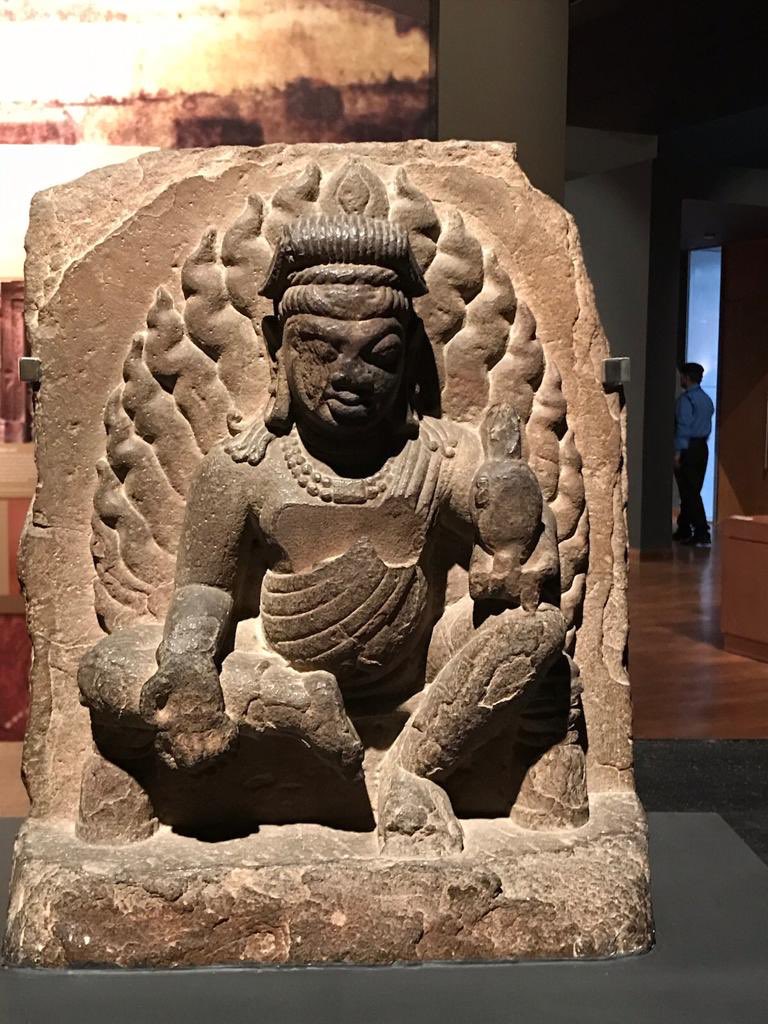 at wedding of Shiva & Parvati, 6th cen. CE, Jogeshwari Caves, Mumbai.3. 11th cen. CE, Thanjavur" title="अ is for अग्नि or #Agni, Vedic god of fire and one of the most important in the Vedic pantheon. #AksharArt #ArtByTheLetter1. 7th Cen. CE, Kaimur (BiharMuseum)2. Agni’s head as https://abs.twimg.com/emoji/v2/... draggable="false" alt="🔥" title="Feuer" aria-label="Emoji: Feuer"> at wedding of Shiva & Parvati, 6th cen. CE, Jogeshwari Caves, Mumbai.3. 11th cen. CE, Thanjavur">
at wedding of Shiva & Parvati, 6th cen. CE, Jogeshwari Caves, Mumbai.3. 11th cen. CE, Thanjavur" title="अ is for अग्नि or #Agni, Vedic god of fire and one of the most important in the Vedic pantheon. #AksharArt #ArtByTheLetter1. 7th Cen. CE, Kaimur (BiharMuseum)2. Agni’s head as https://abs.twimg.com/emoji/v2/... draggable="false" alt="🔥" title="Feuer" aria-label="Emoji: Feuer"> at wedding of Shiva & Parvati, 6th cen. CE, Jogeshwari Caves, Mumbai.3. 11th cen. CE, Thanjavur">
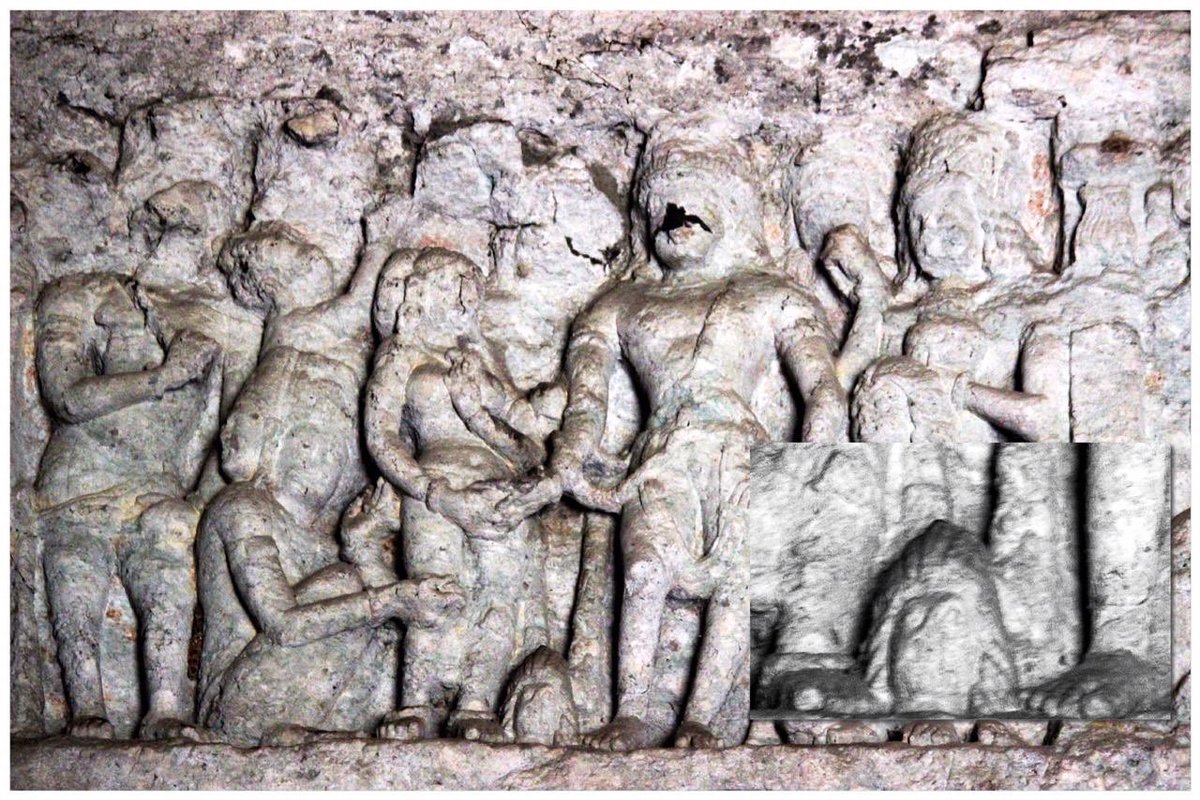 at wedding of Shiva & Parvati, 6th cen. CE, Jogeshwari Caves, Mumbai.3. 11th cen. CE, Thanjavur" title="अ is for अग्नि or #Agni, Vedic god of fire and one of the most important in the Vedic pantheon. #AksharArt #ArtByTheLetter1. 7th Cen. CE, Kaimur (BiharMuseum)2. Agni’s head as https://abs.twimg.com/emoji/v2/... draggable="false" alt="🔥" title="Feuer" aria-label="Emoji: Feuer"> at wedding of Shiva & Parvati, 6th cen. CE, Jogeshwari Caves, Mumbai.3. 11th cen. CE, Thanjavur">
at wedding of Shiva & Parvati, 6th cen. CE, Jogeshwari Caves, Mumbai.3. 11th cen. CE, Thanjavur" title="अ is for अग्नि or #Agni, Vedic god of fire and one of the most important in the Vedic pantheon. #AksharArt #ArtByTheLetter1. 7th Cen. CE, Kaimur (BiharMuseum)2. Agni’s head as https://abs.twimg.com/emoji/v2/... draggable="false" alt="🔥" title="Feuer" aria-label="Emoji: Feuer"> at wedding of Shiva & Parvati, 6th cen. CE, Jogeshwari Caves, Mumbai.3. 11th cen. CE, Thanjavur">
 at wedding of Shiva & Parvati, 6th cen. CE, Jogeshwari Caves, Mumbai.3. 11th cen. CE, Thanjavur" title="अ is for अग्नि or #Agni, Vedic god of fire and one of the most important in the Vedic pantheon. #AksharArt #ArtByTheLetter1. 7th Cen. CE, Kaimur (BiharMuseum)2. Agni’s head as https://abs.twimg.com/emoji/v2/... draggable="false" alt="🔥" title="Feuer" aria-label="Emoji: Feuer"> at wedding of Shiva & Parvati, 6th cen. CE, Jogeshwari Caves, Mumbai.3. 11th cen. CE, Thanjavur">
at wedding of Shiva & Parvati, 6th cen. CE, Jogeshwari Caves, Mumbai.3. 11th cen. CE, Thanjavur" title="अ is for अग्नि or #Agni, Vedic god of fire and one of the most important in the Vedic pantheon. #AksharArt #ArtByTheLetter1. 7th Cen. CE, Kaimur (BiharMuseum)2. Agni’s head as https://abs.twimg.com/emoji/v2/... draggable="false" alt="🔥" title="Feuer" aria-label="Emoji: Feuer"> at wedding of Shiva & Parvati, 6th cen. CE, Jogeshwari Caves, Mumbai.3. 11th cen. CE, Thanjavur">



